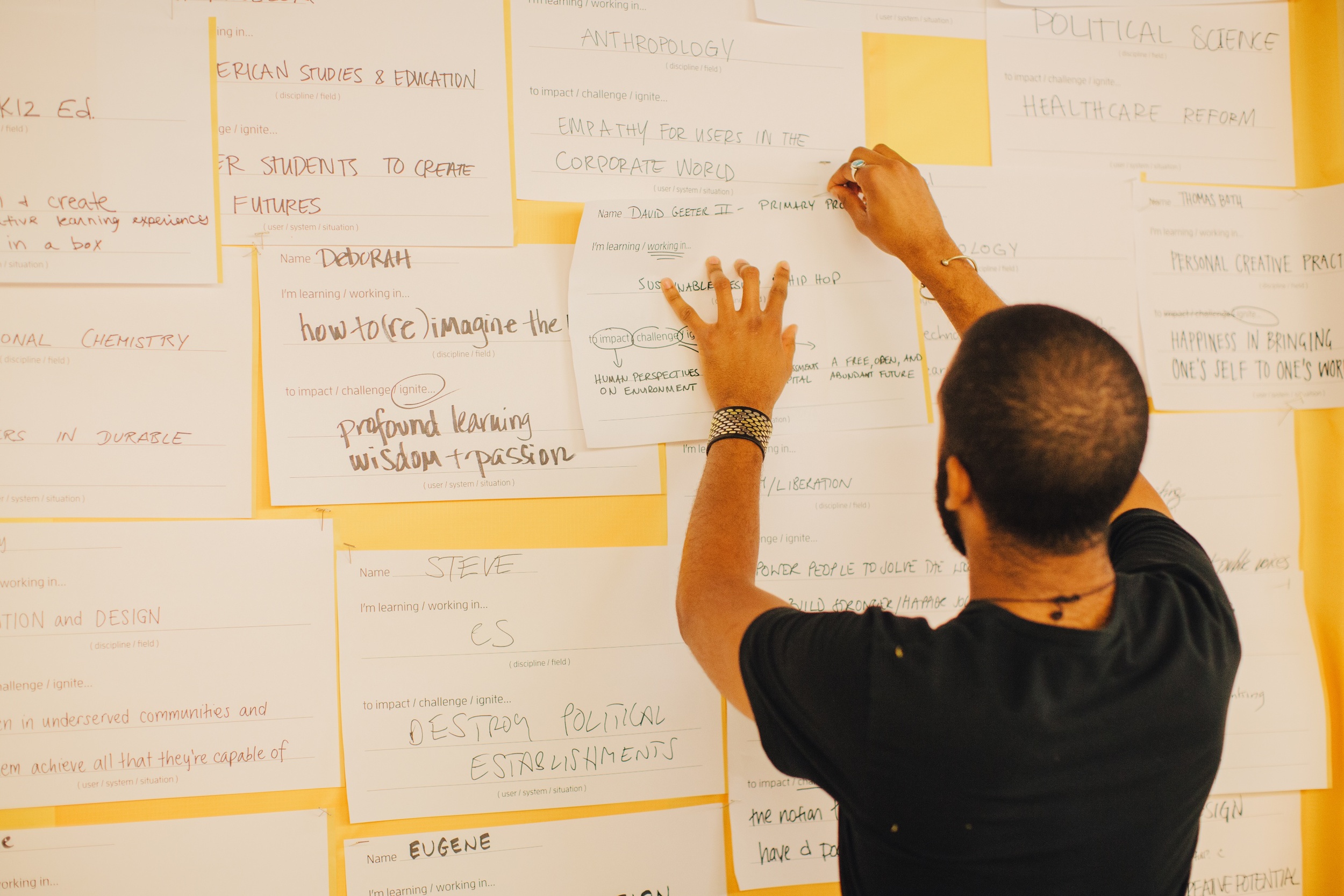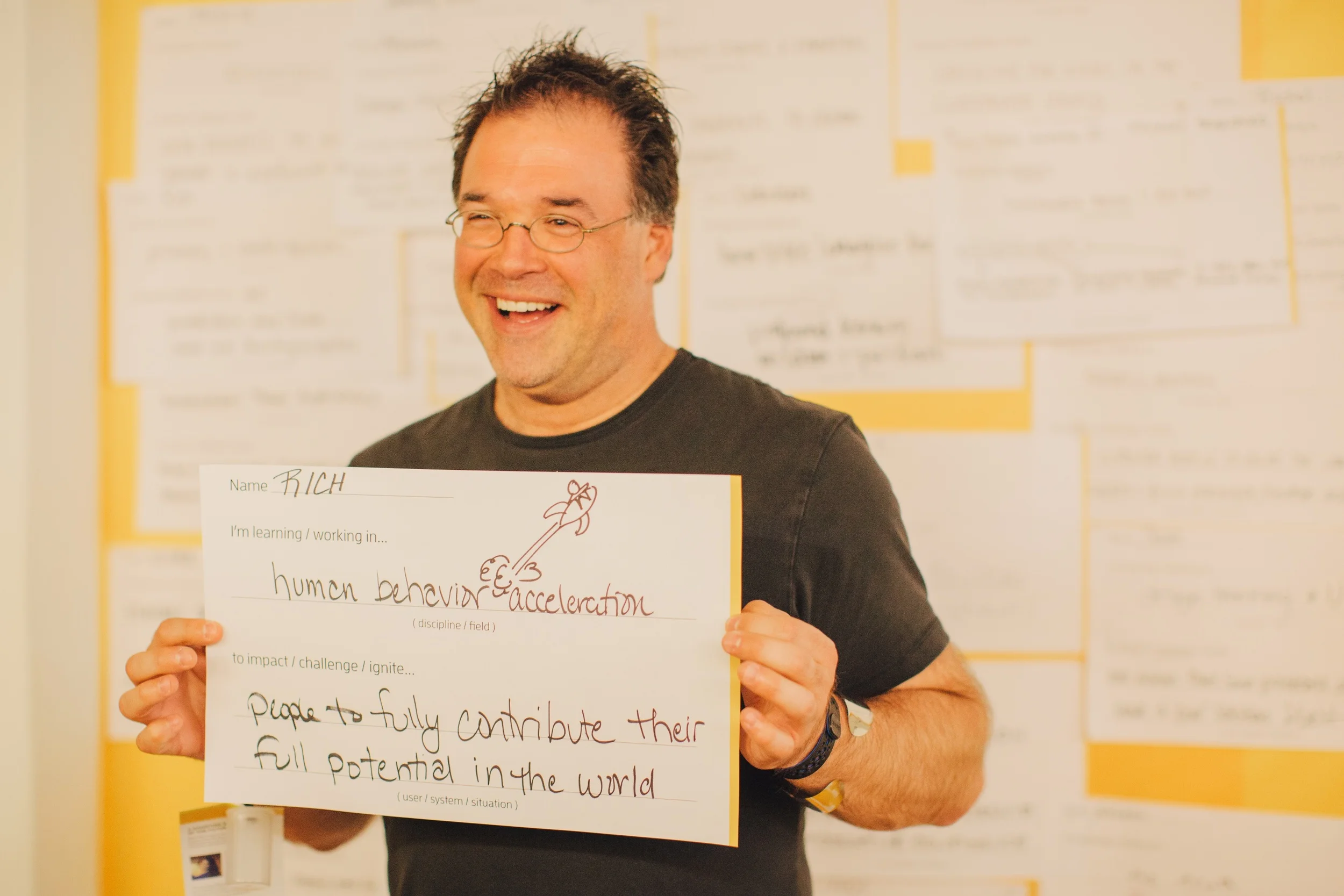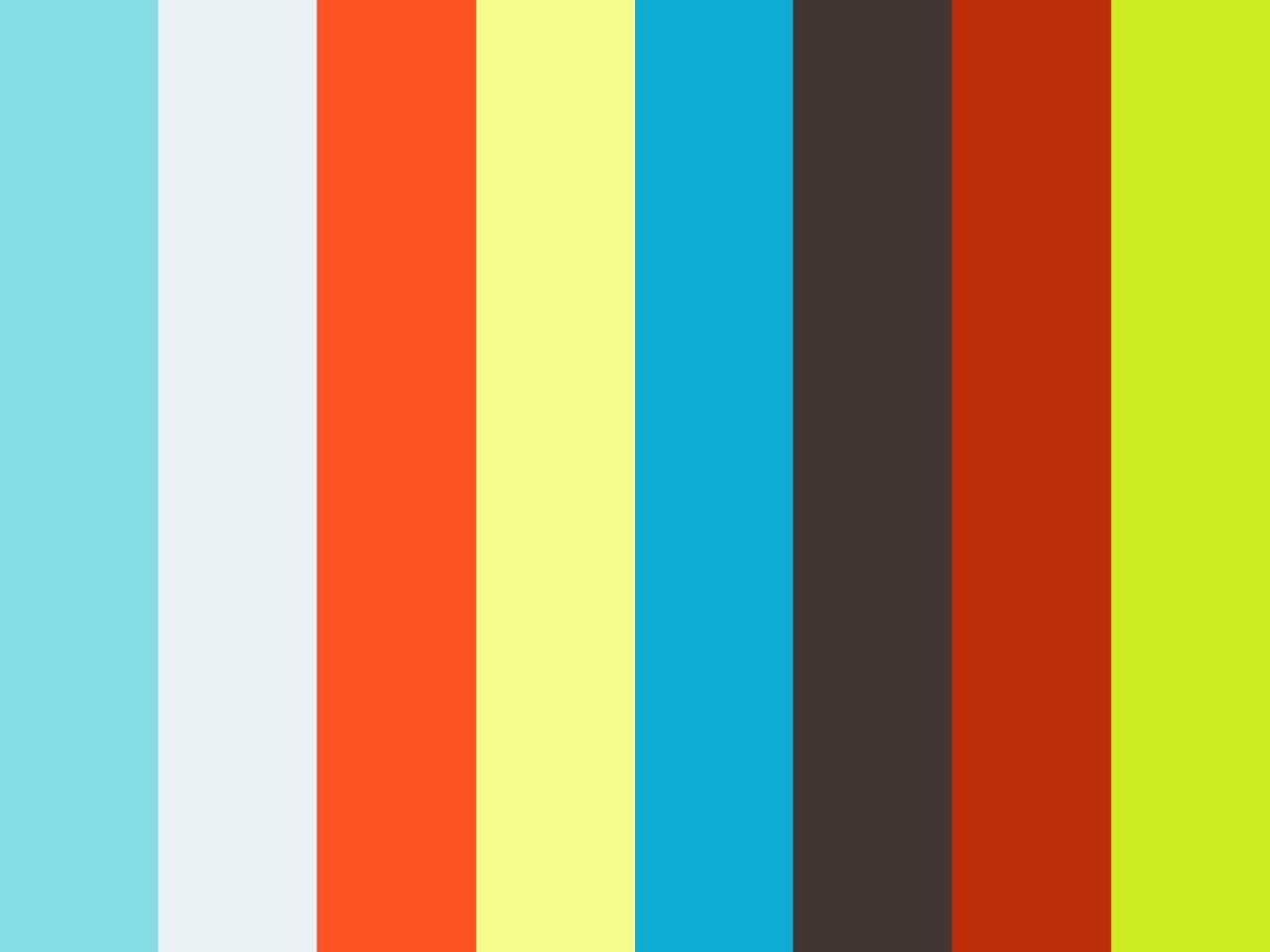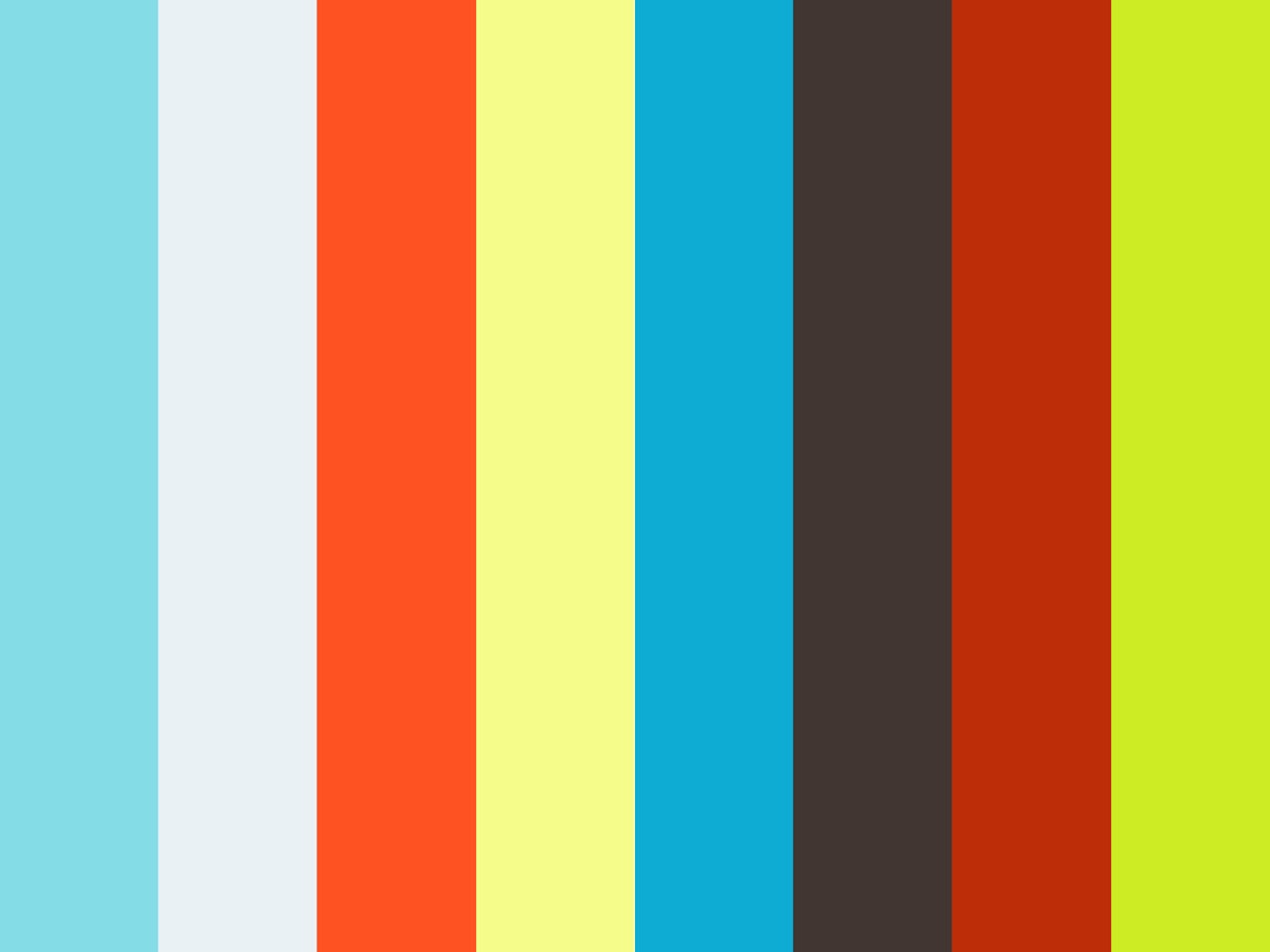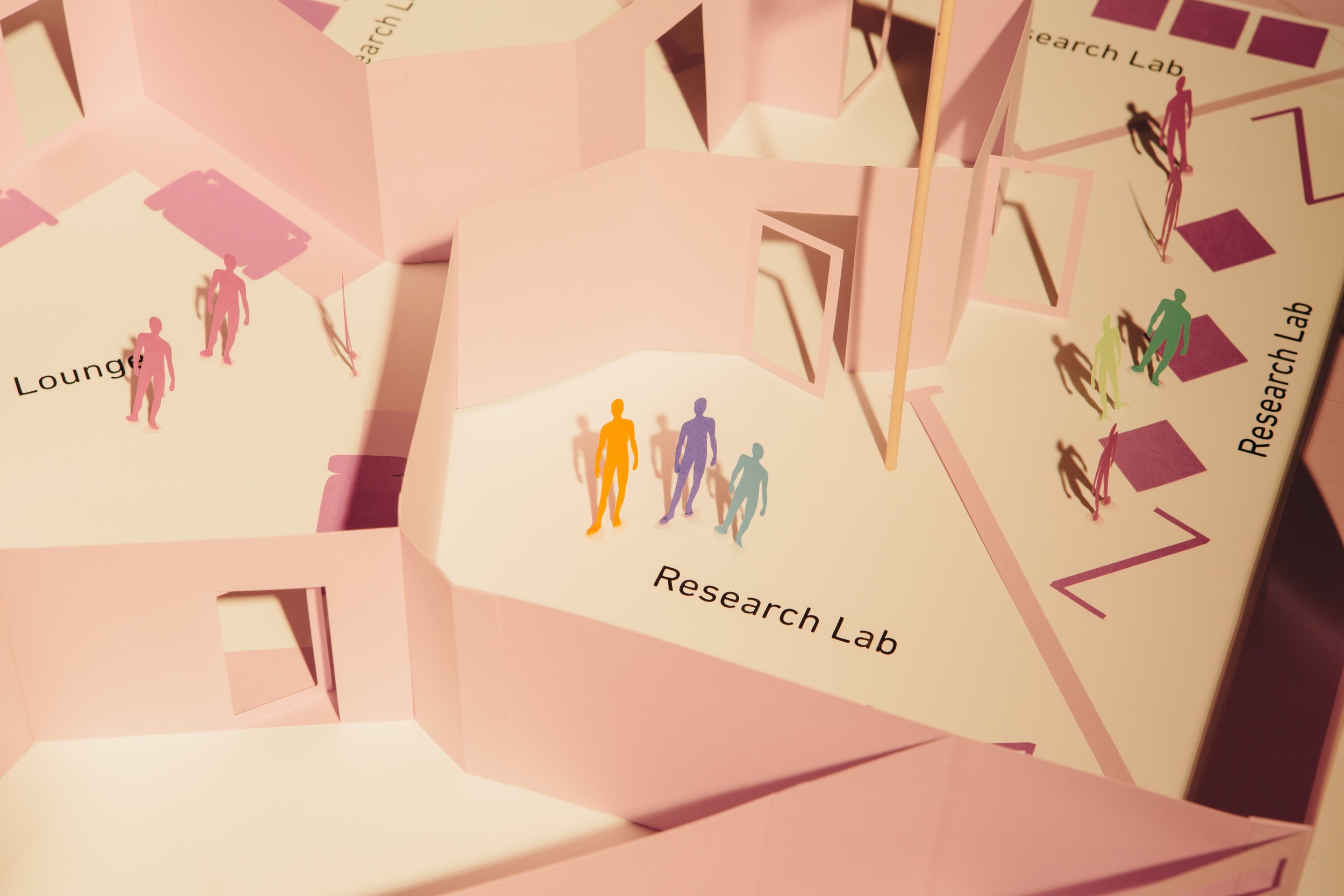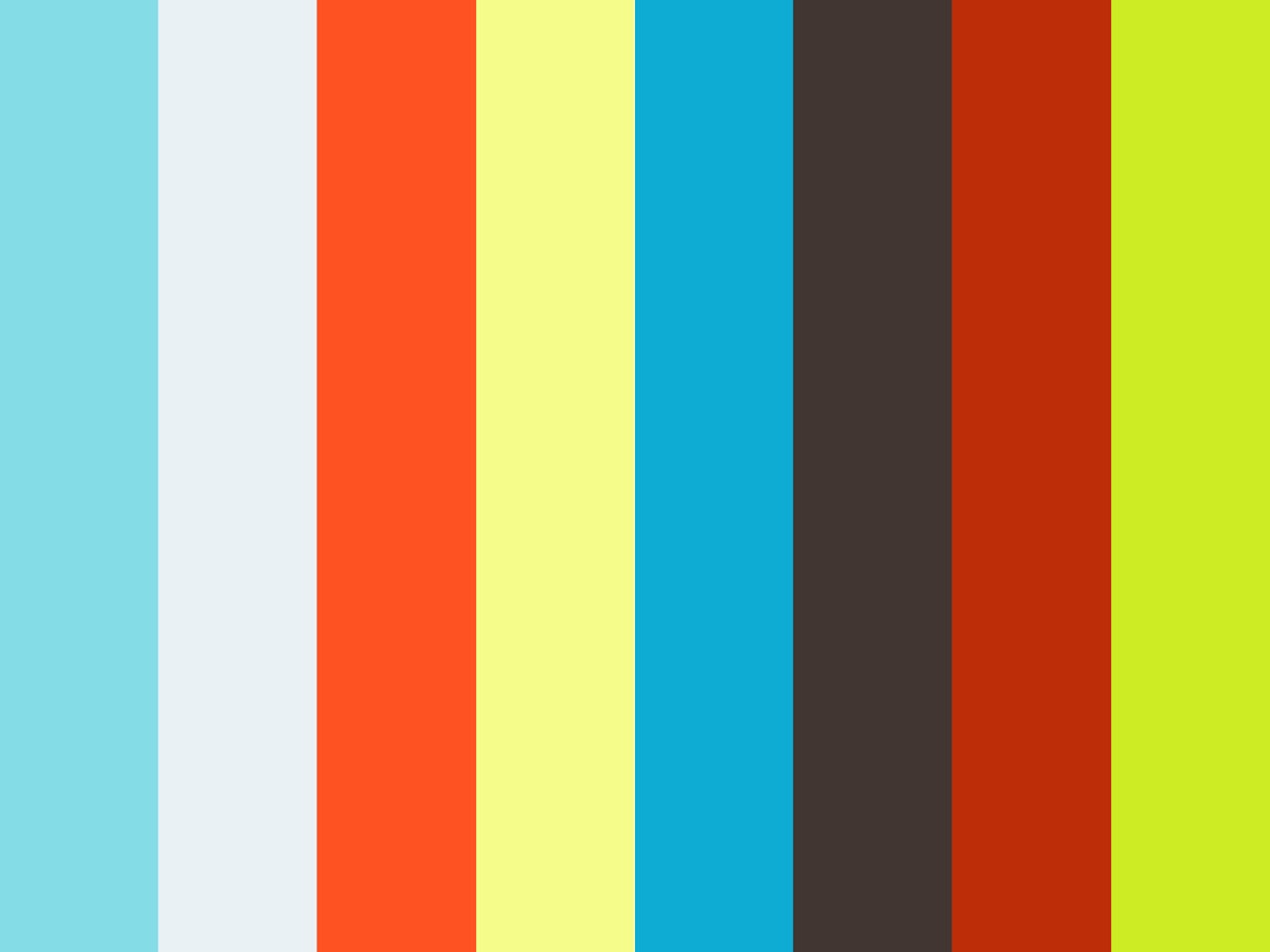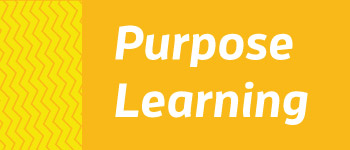








Show, Don't Tell
Why talk about the future - when we can take you there?
Show, Don't Tell
Why talk about the future - when we can take you there?
Watch an Overview of Stanford2025
Getting into the right Mindset
On May 1st, 2014, David Kelley invited students, staff, faculty and friends of the Stanford community to an evening of exploration at the d.school titled "Stanford 2025, an experiential taste of Stanford's futures."
A gallery had been curated for the audience to explore the year long design process of what living and learning could be like at Stanford in the year 2025.
Guests enjoyed exploring the provocative questions and curious conversations over food and drinks, but David and the team wanted to truly embrace one of the design thinking mindsets - show, don't tell.
Creative Director Scott Doorley informed the crowd that they had in fact discovered time travel and briefed them on the proper ear and eye protection necessary for immediate departure.
However, the time machine failed and guests crash landed in the year 2100. Luckily though, the "Stanford2025 - A Retrospective of Living and Learning on Campus" exhibit happened to be on display at the Hasso Plattner Institute of Design at Stanford on May 1st-5th, 2100.
The exhibit had curated over 25 artifacts from 4 possible futures for guests to engage and explore throughout the evening.
Scroll down to explore the exhibit ideas, articles, and artifacts and then download the tools to start experimenting your own future.
View Gallery of Guests Arriving to Stanford2025

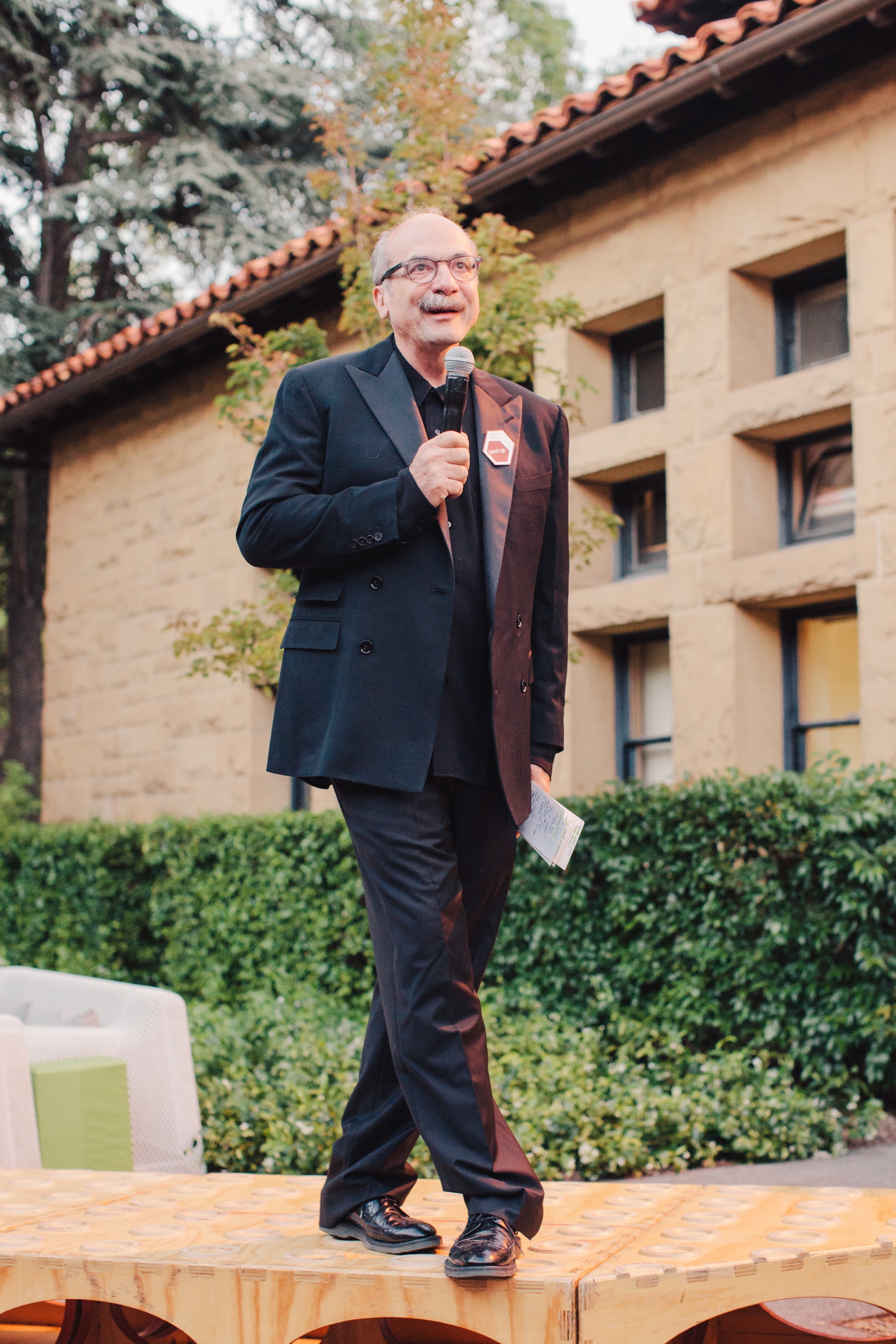
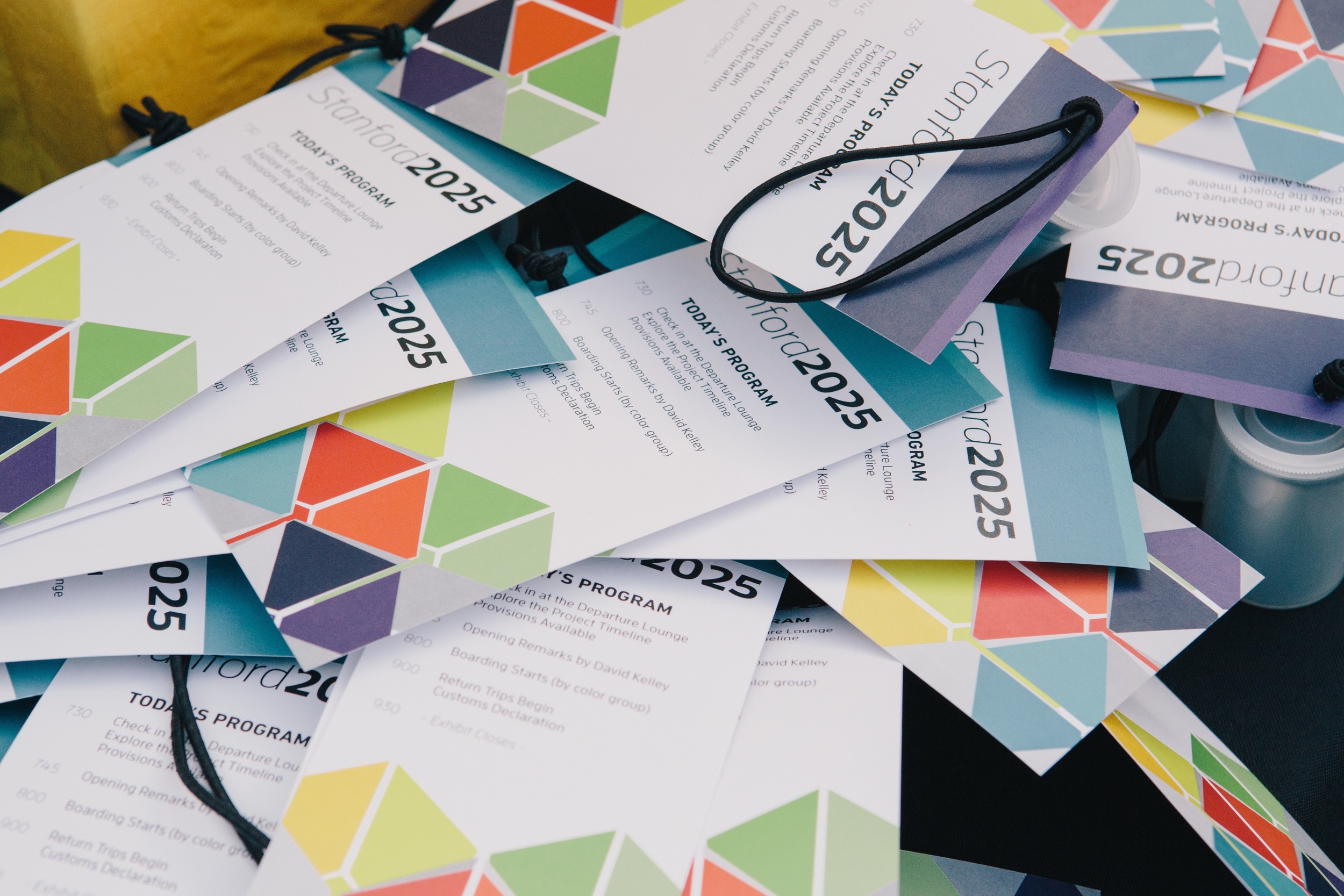
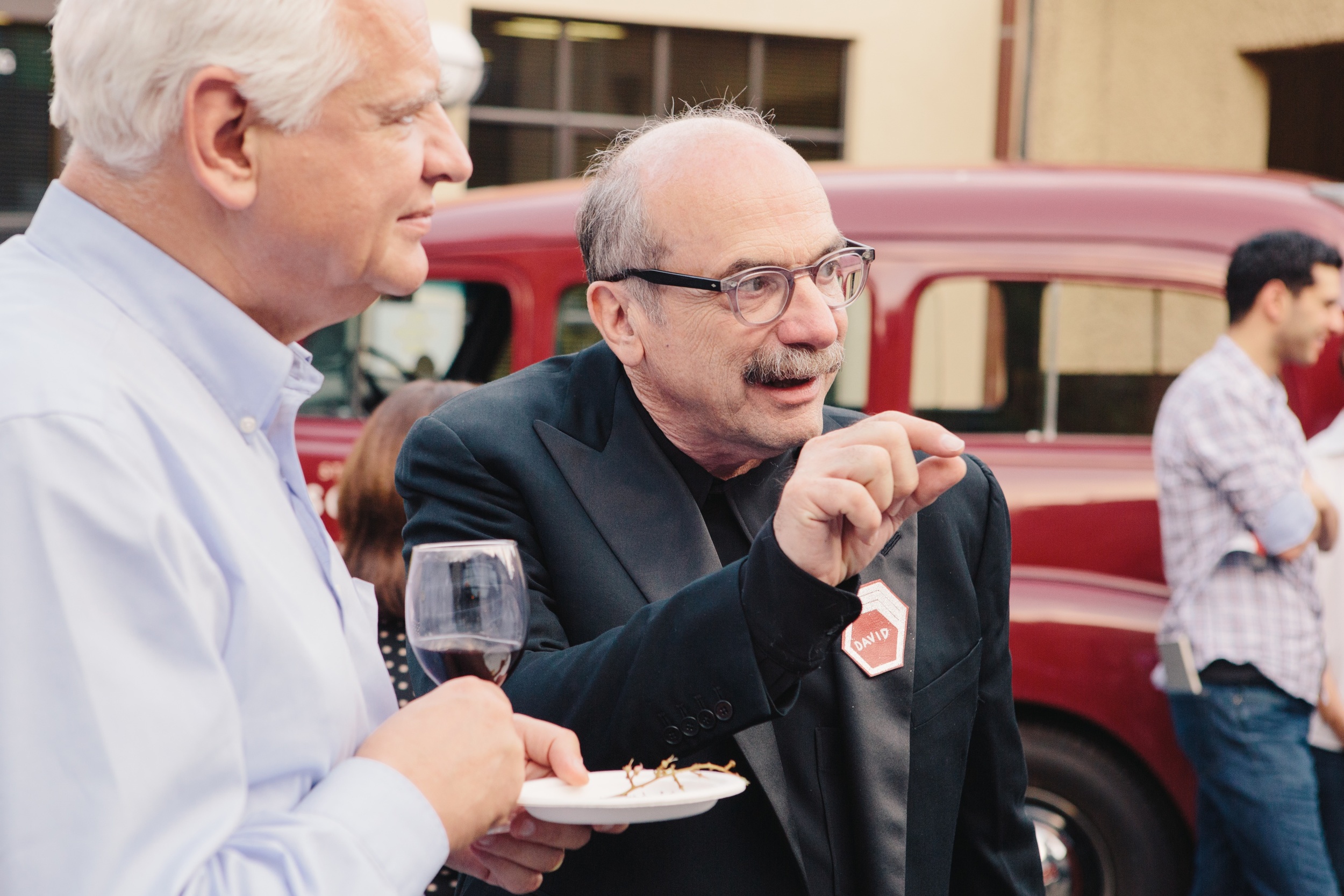



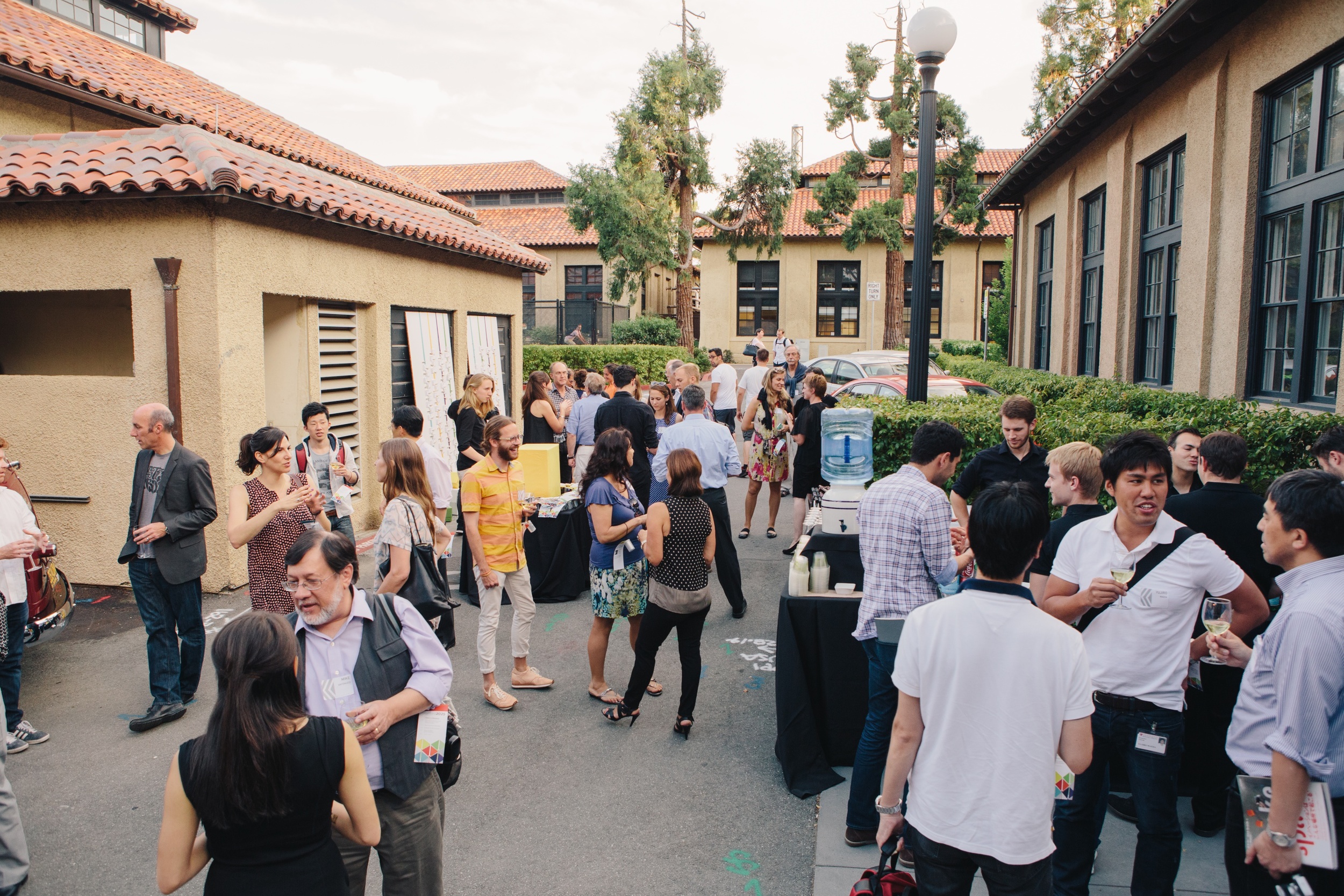


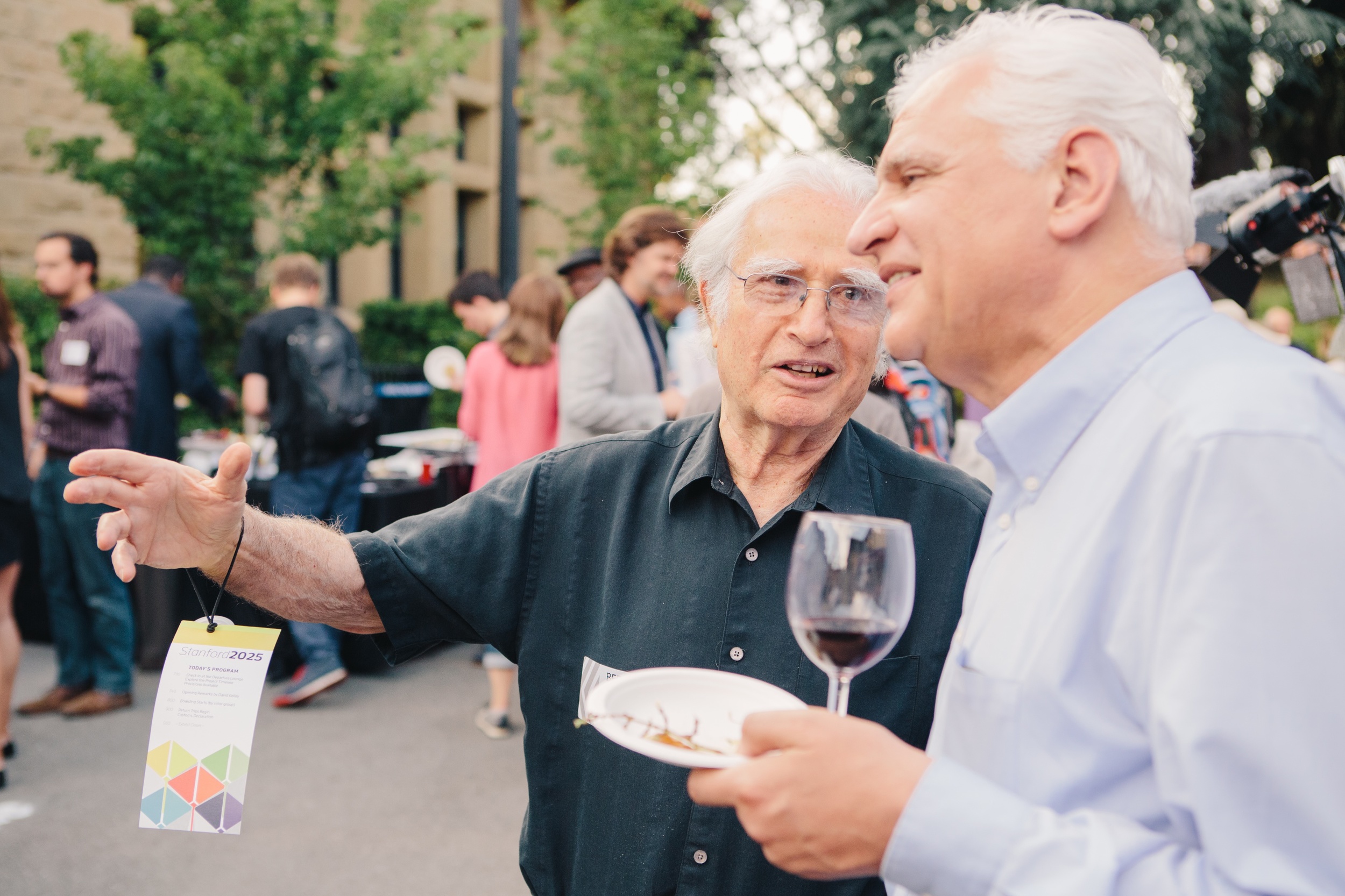
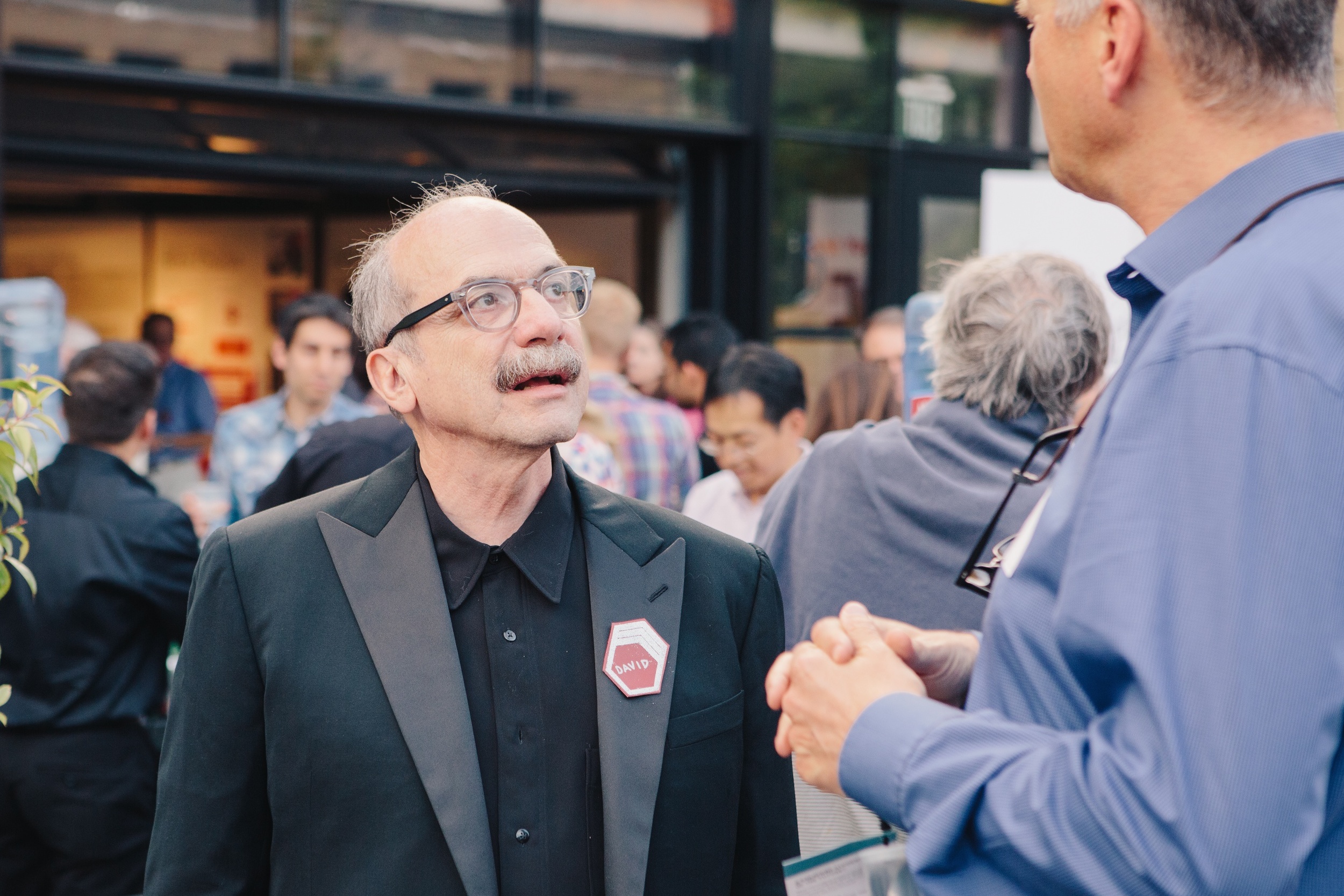
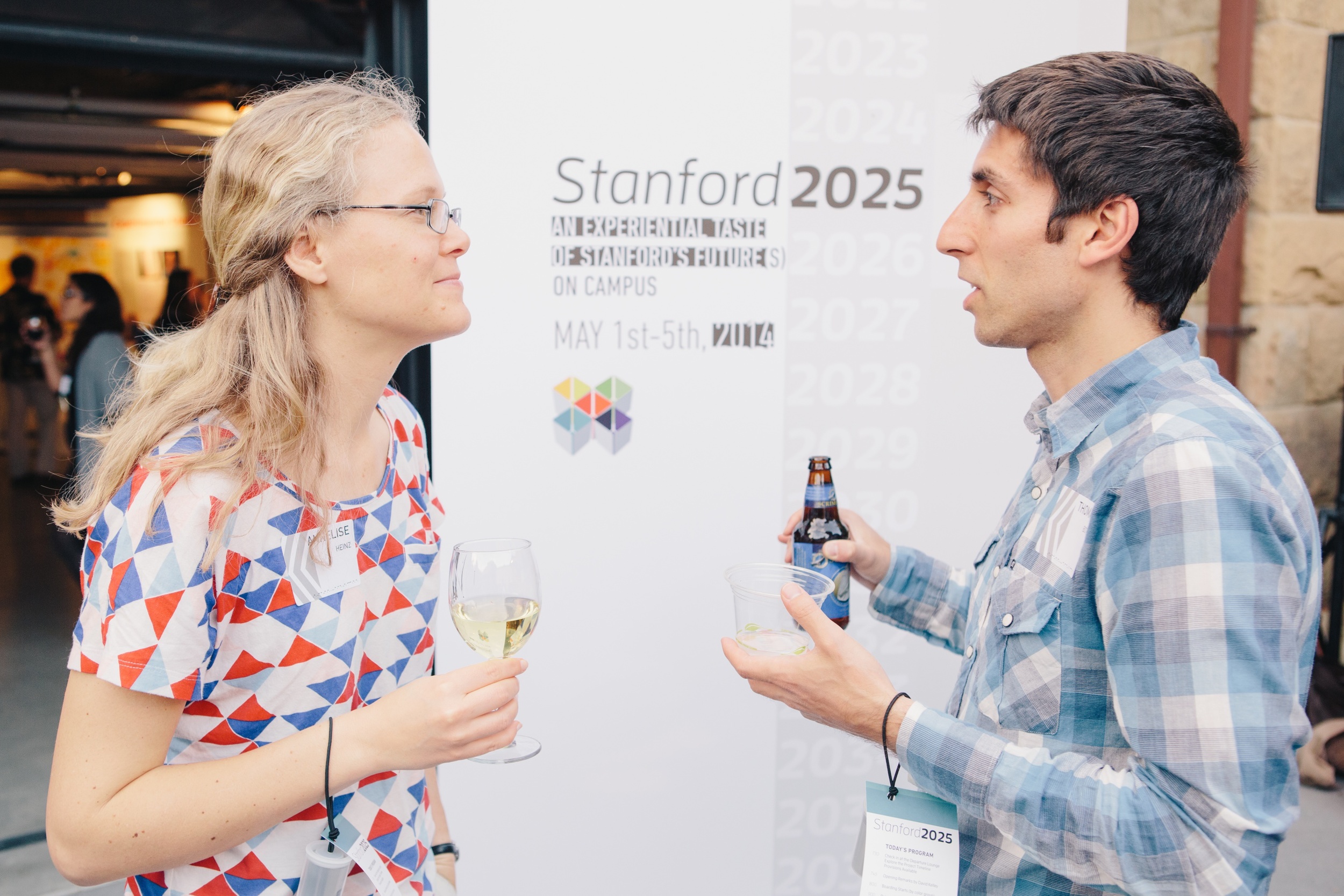
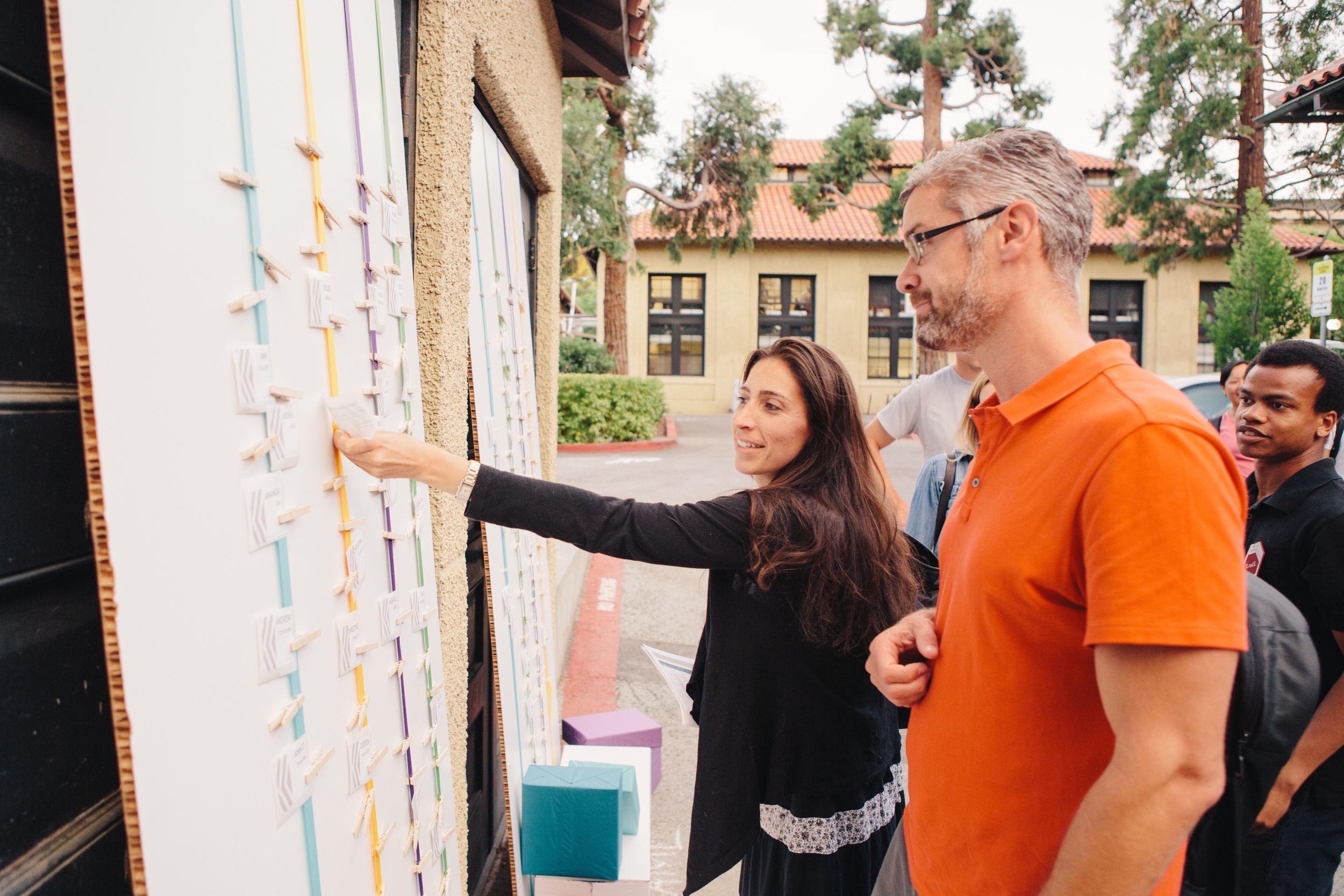
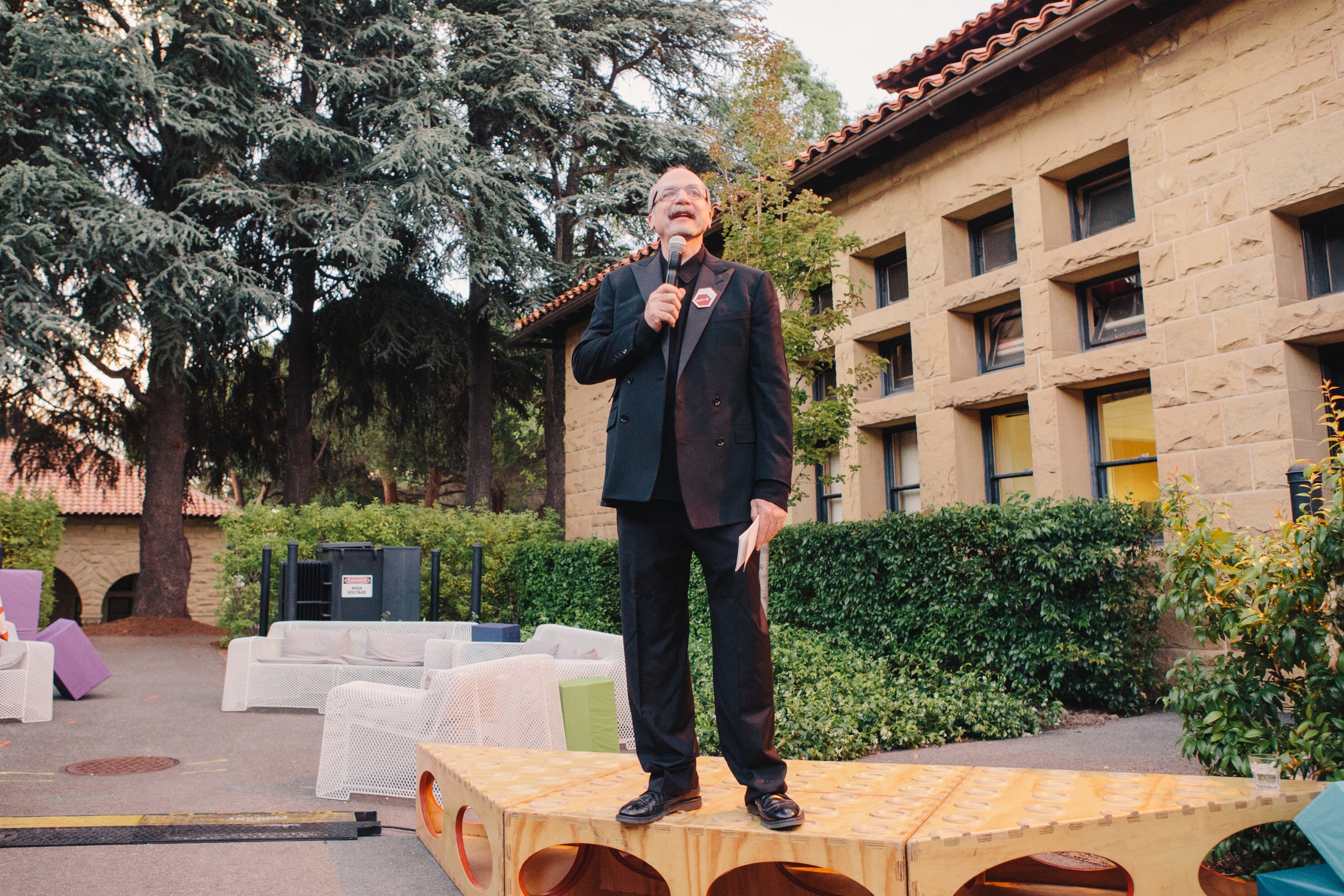

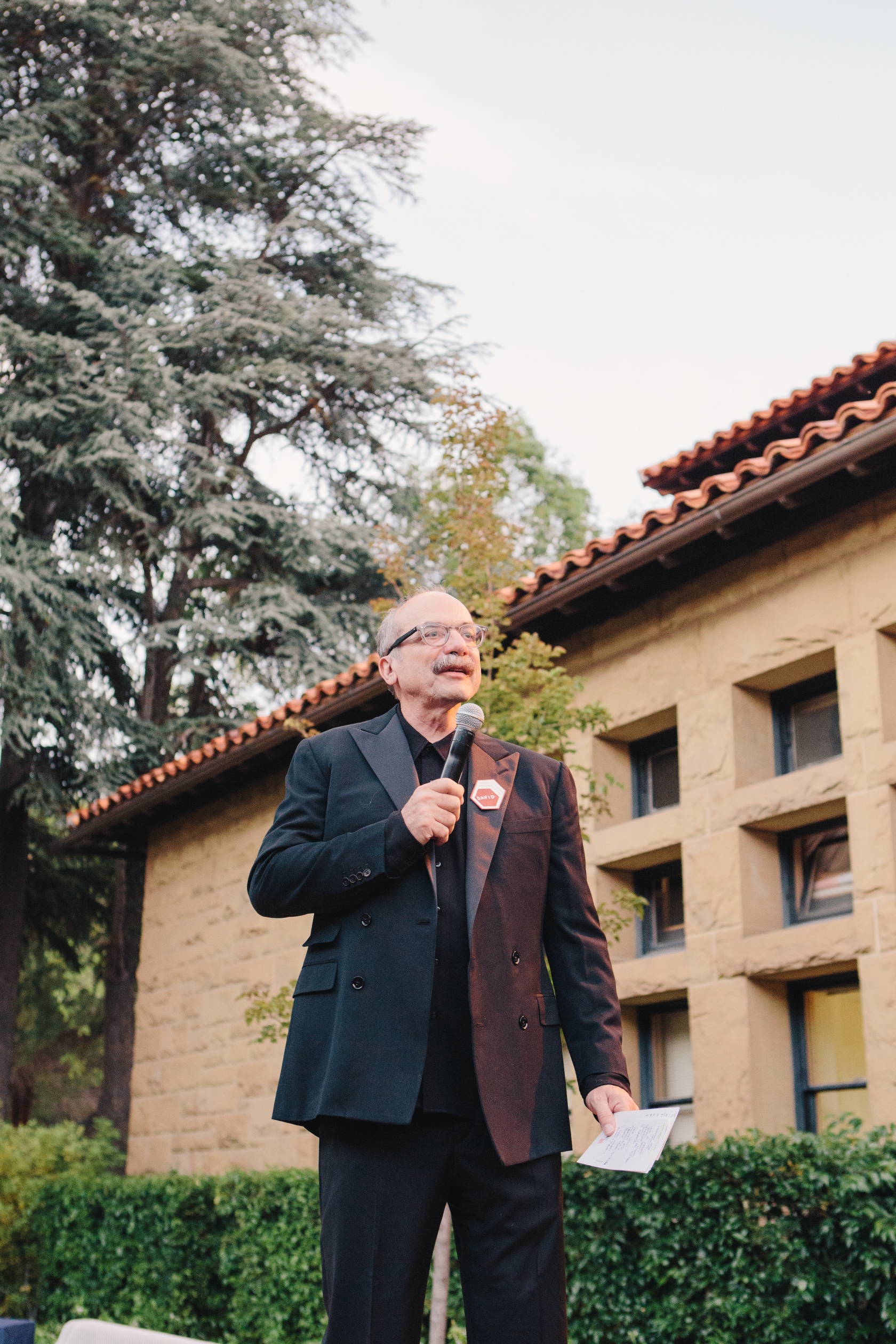
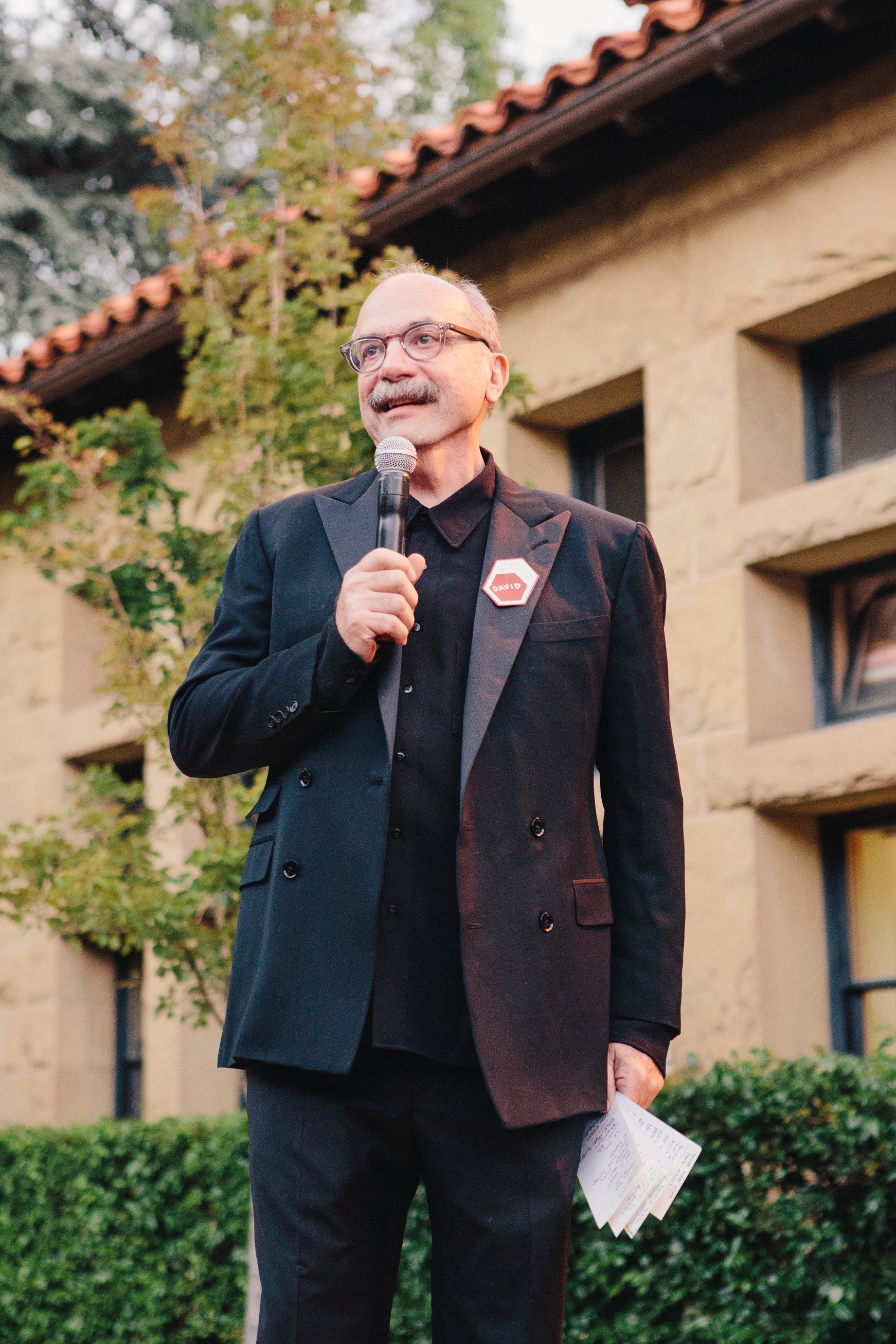
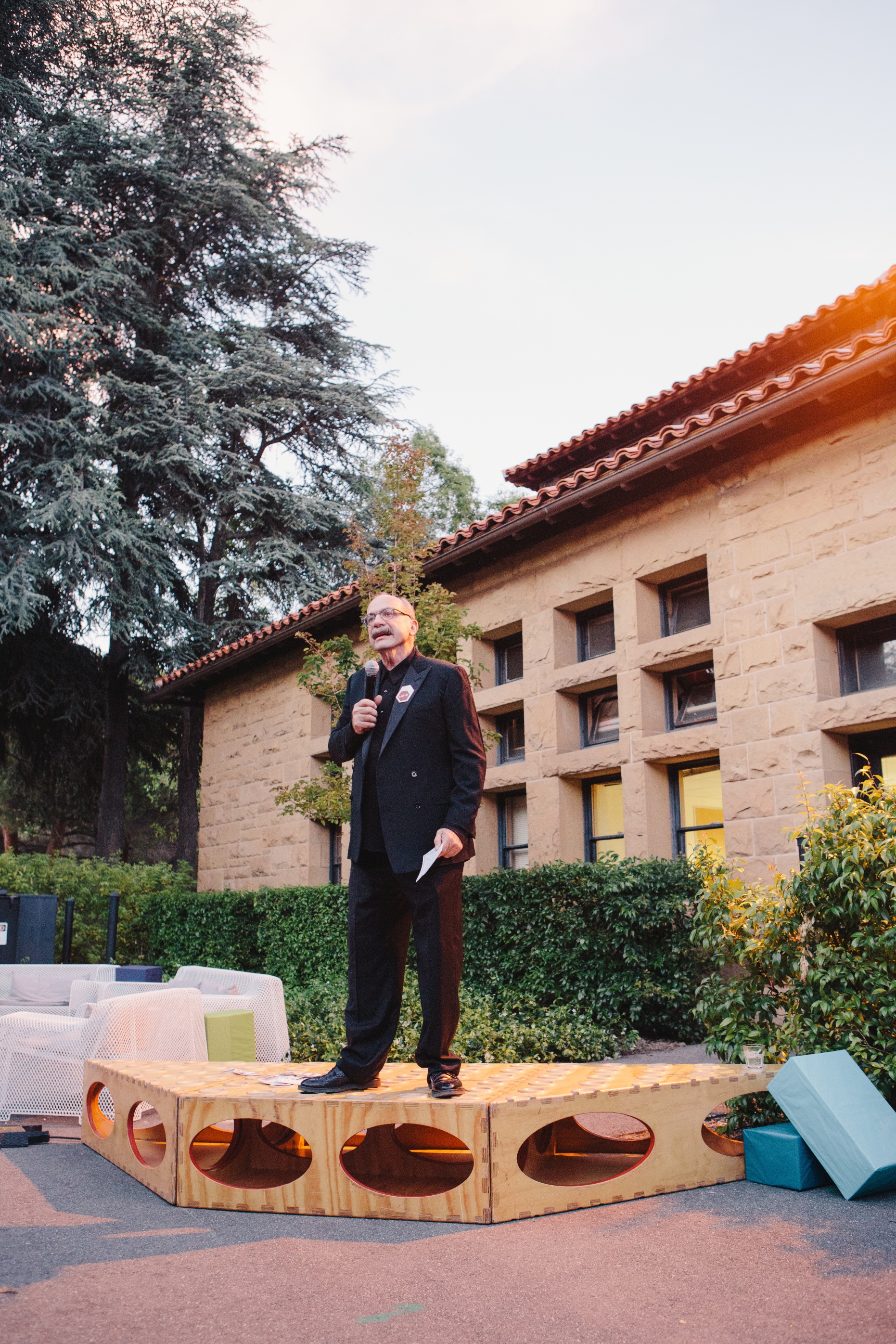
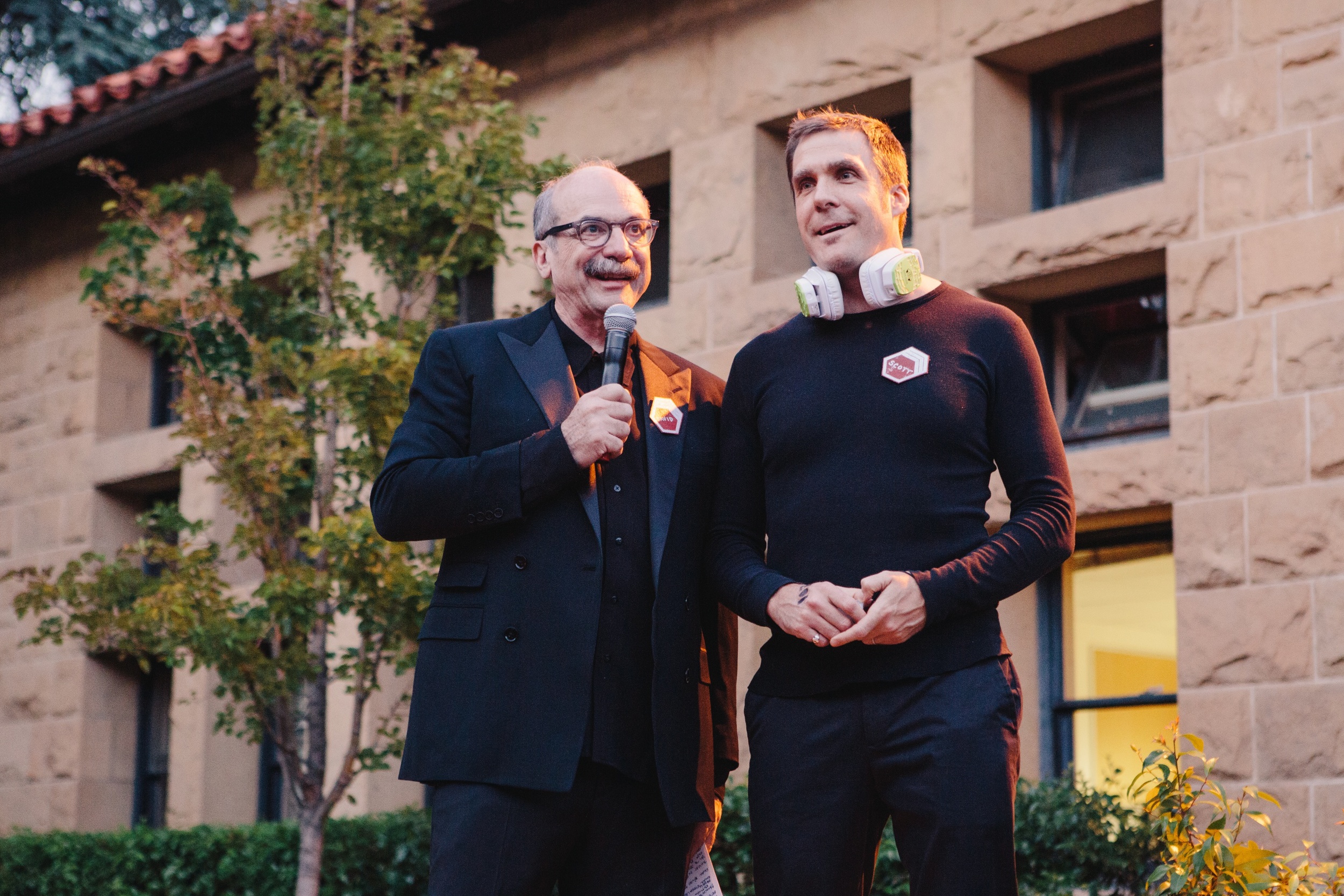
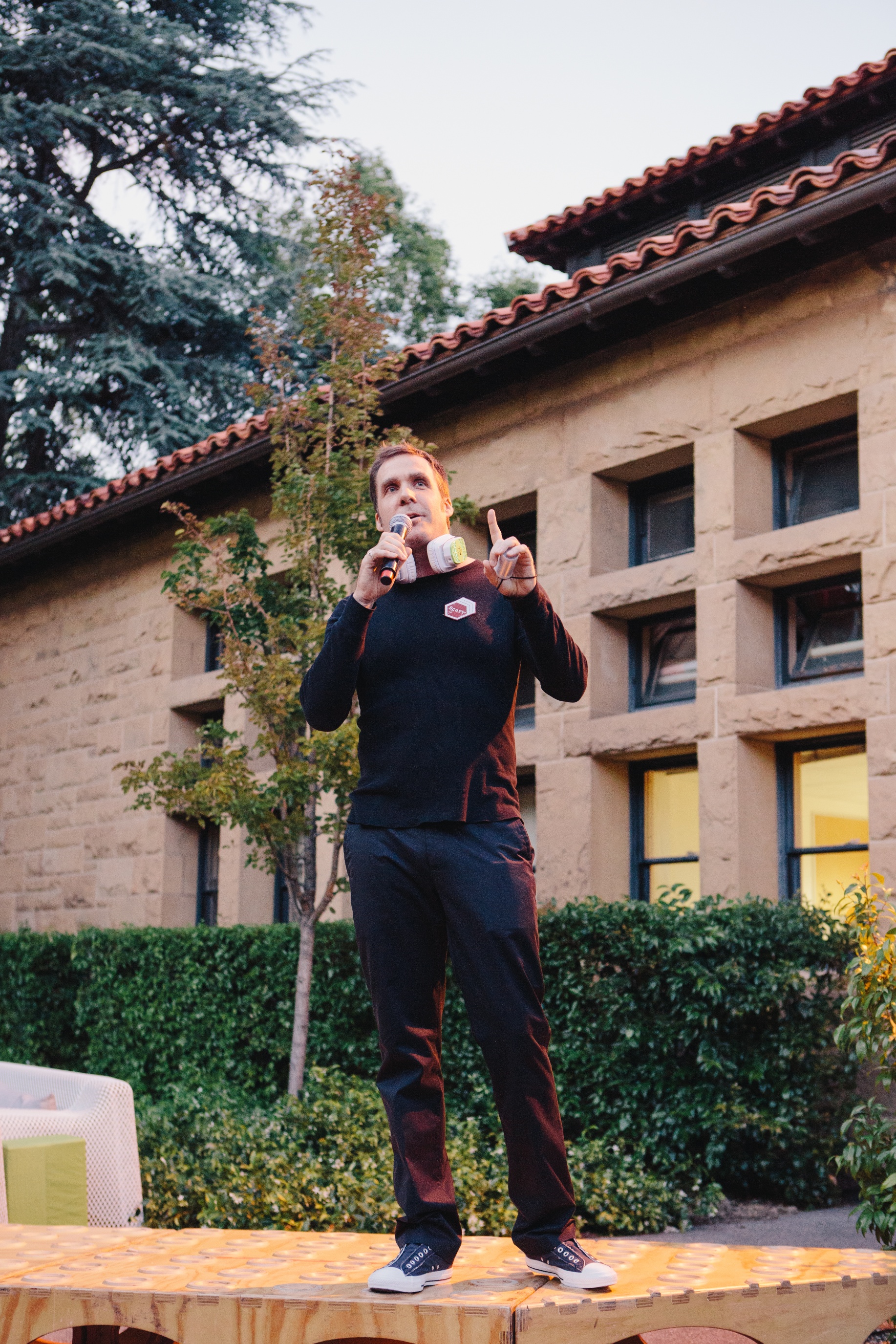

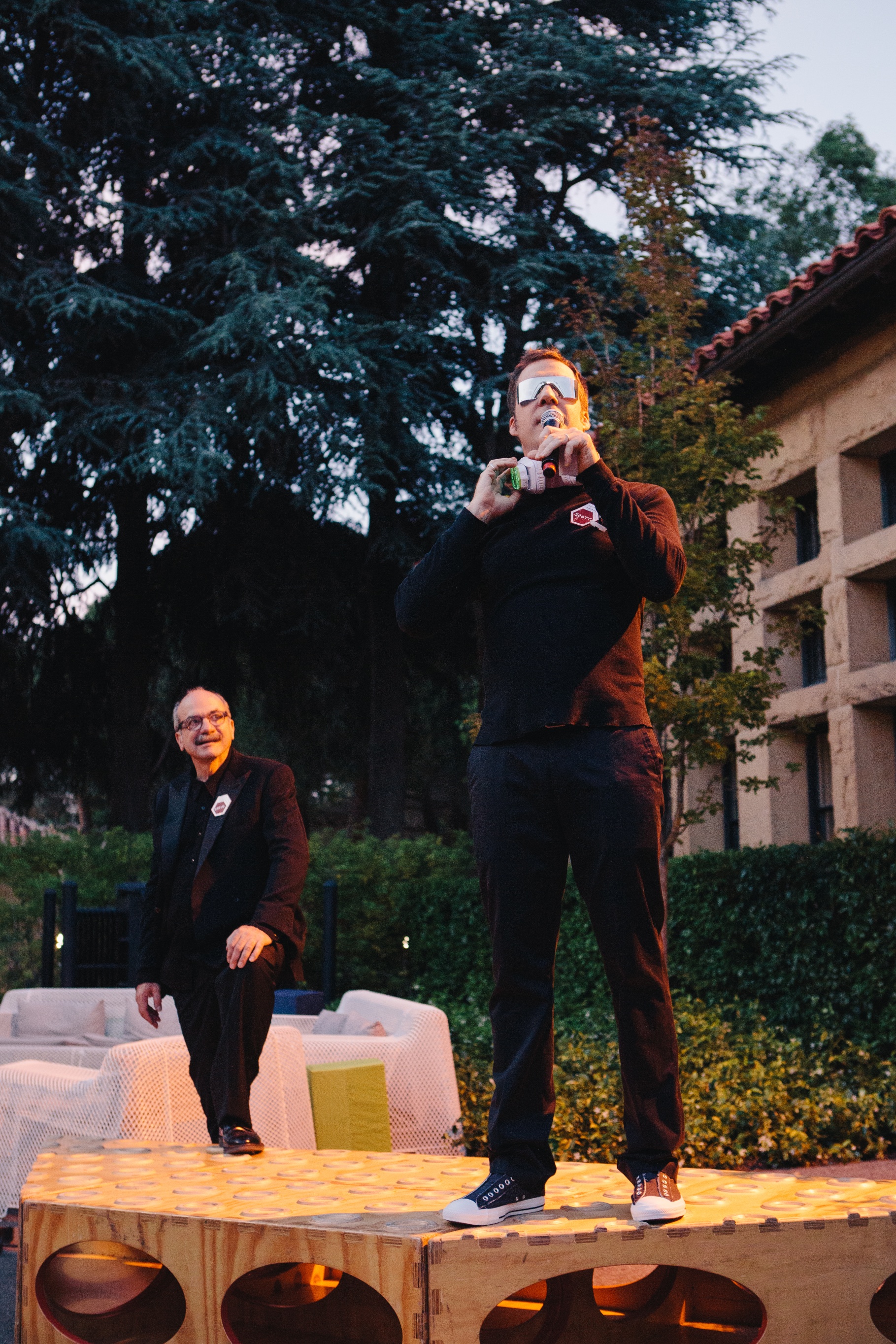
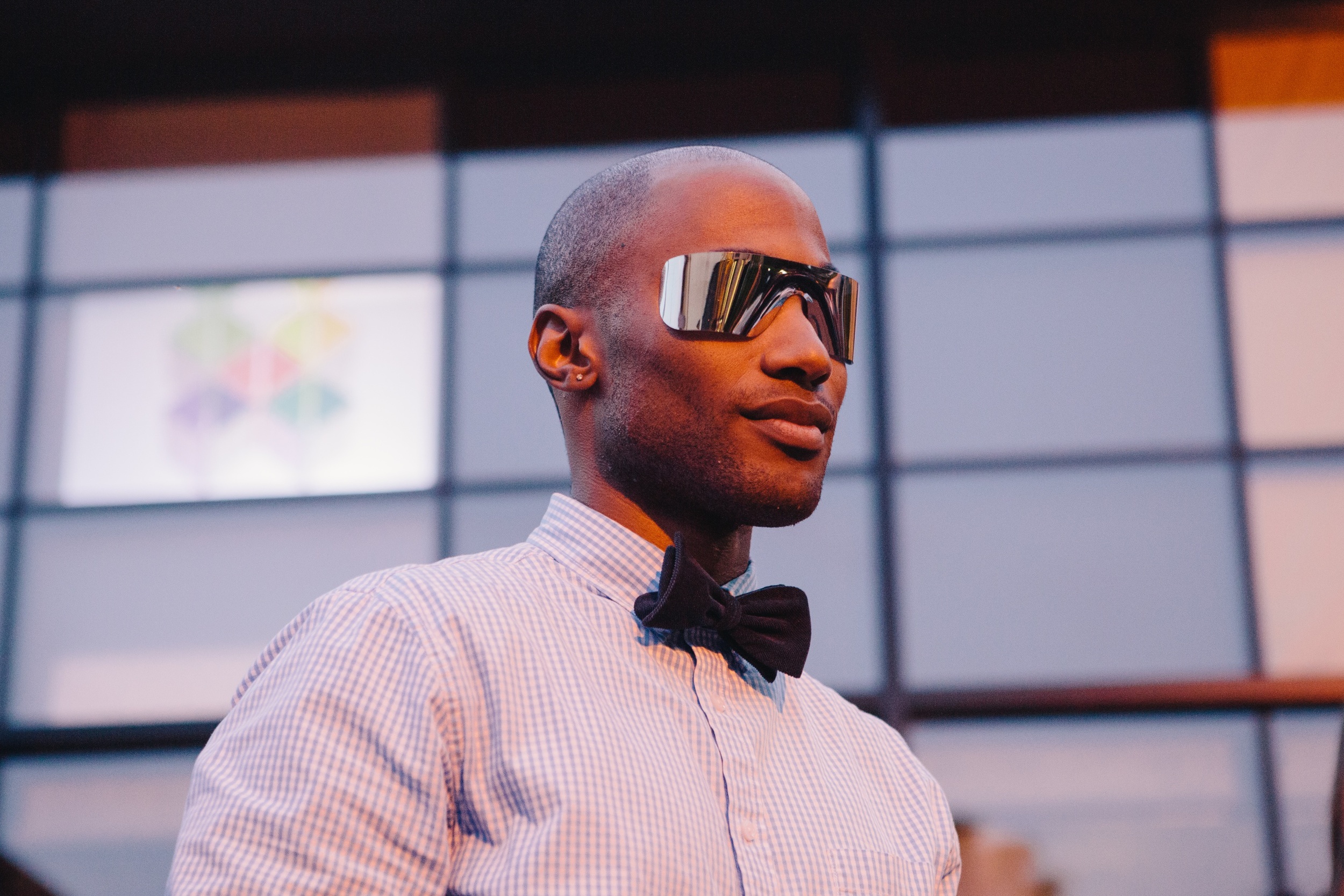
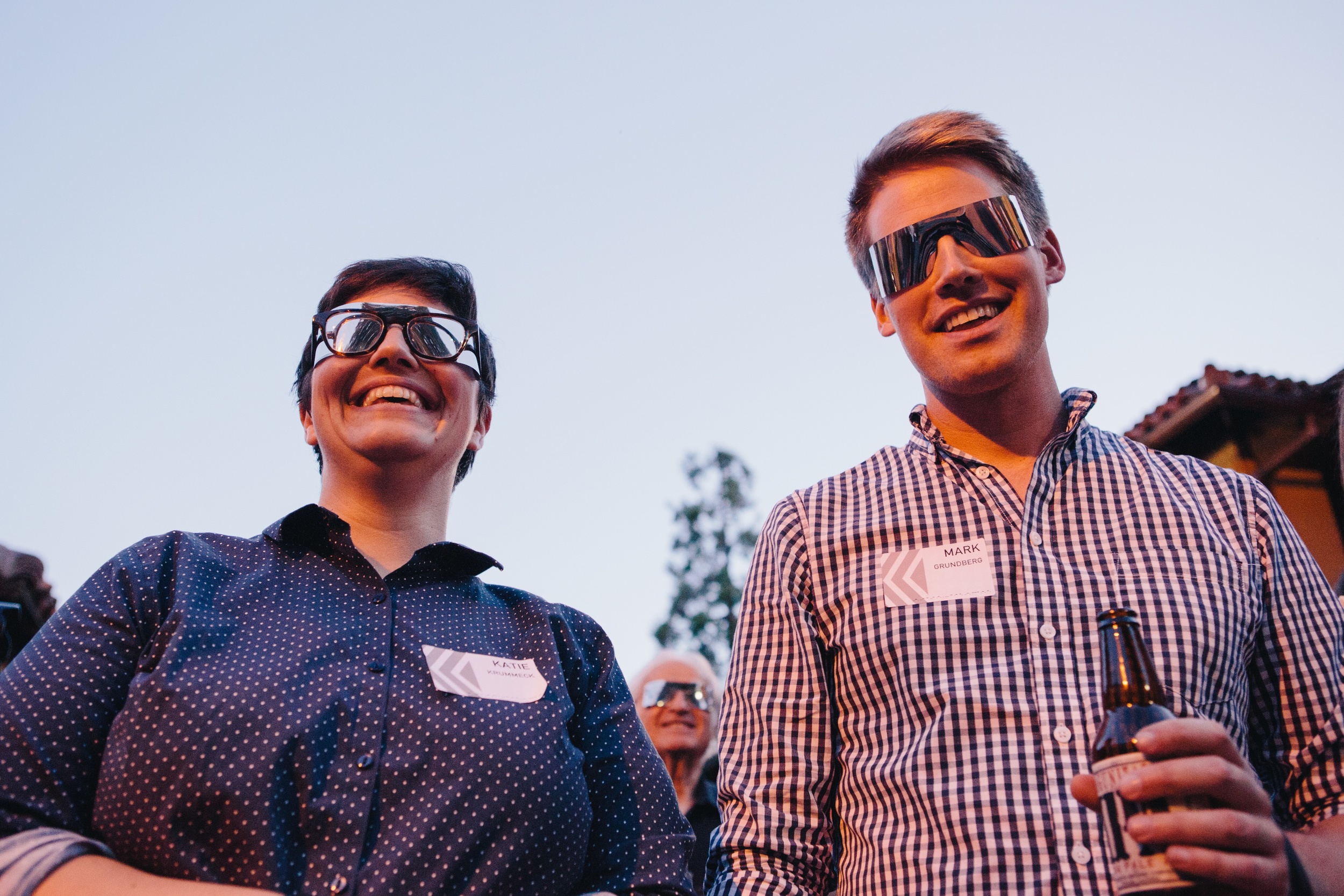

Mechanics of Time Travel
Like pulling back a sling shot, launching into the future first requires a step back into time.
Mechanics of Time Travel
Like pulling back a sling shot, launching into the future first requires a step back into time.
Experience the Time Machine.
Headphones recommended.

When are we?
A time machine malfunction crashes travelers into an exhibit of possible futures.
When are we?
A time machine malfunction crashes travelers into an exhibit of possible futures.
Welcome to 2100
During the crash landing of the time machine - sound divided, light split and time fractured - opening 4 possible future paths for the travelers to explore.
Many of the articles and artifacts of those 4 possible futures have been curated and are listed below for you to explore.
Some ideas remain missing.
Some ideas remain yet to be invented.
We hope this collection serves as a source of provocation and inspiration for you to experiment with your own future.
Box ID: AF 34.13.64
Box ID: PL 249.185.26

Box ID: OL 137.191.63
Open Loop University Articles
Box ID: OL 137.191.63
Open Loop University Articles
Watch an Overview of Open Loop University
ARTICLE 15
Advertisements for Open Loop University
Marketing materials developed and used in publications from 2025-2040
Stanford’s marketing department focused on communicating the new Open Loop system during the 2020s and 2030s. This was part of a strategic initiative to differentiate the Stanford experience and communicate that Stanford produced curious, intellectually vibrant, and agile lifelong learners.
The ads displayed here cover a variety of aspects and benefits of the Open Loop structure, including the archive of loop paths that Stanford curated over time to guide and inspire future students. One successful advertisement highlighted the path journeys of different individuals over their lifetimes. Stanford also began a new campaign when Admissions started recruiting students in 2015, which continued until the eventual closing of the application process in 2035.
Watch Video of Tania Anaissie explain Loop Ads.
Kelly Schmutte explaining Loop Ads
Loop Ads on display
View Loop Ads Gallery
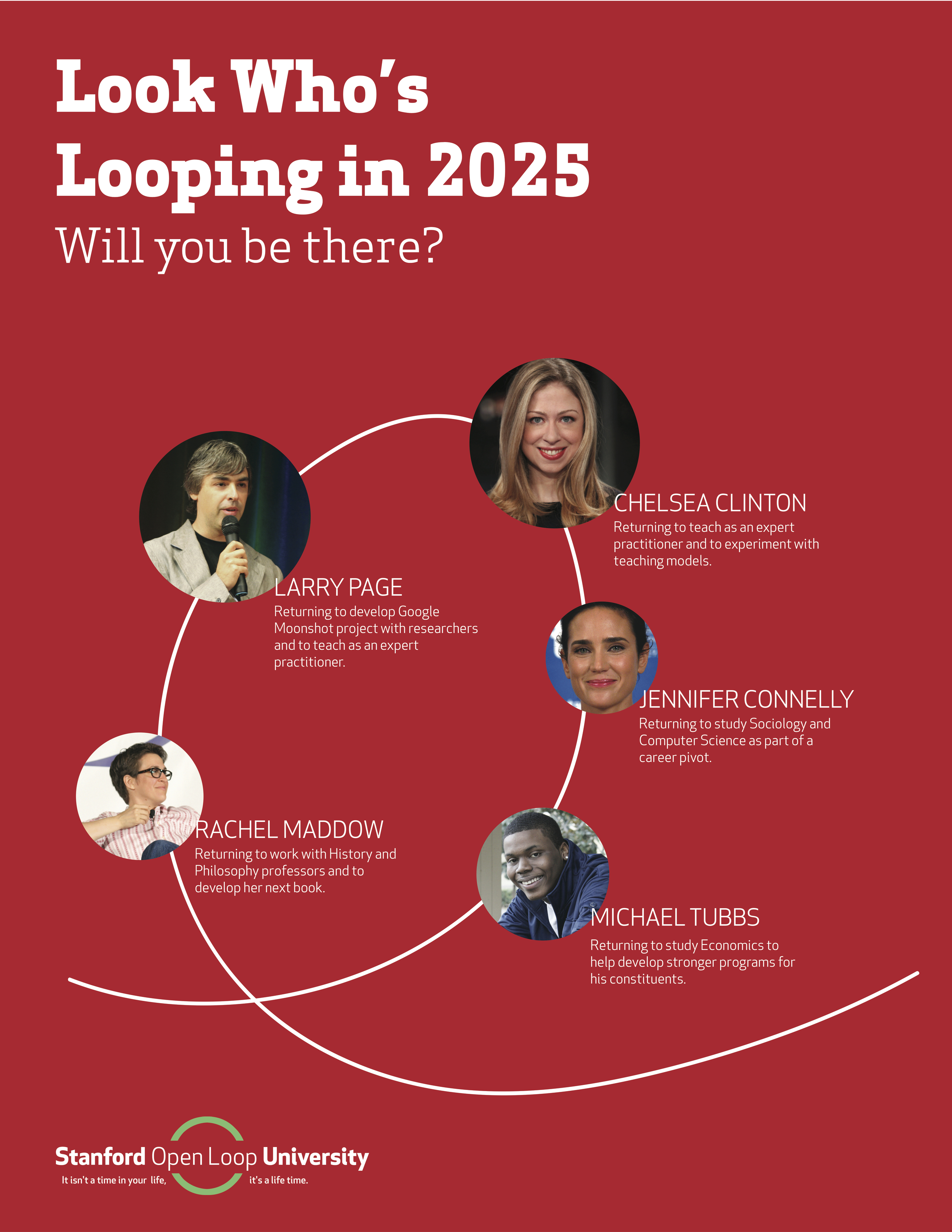
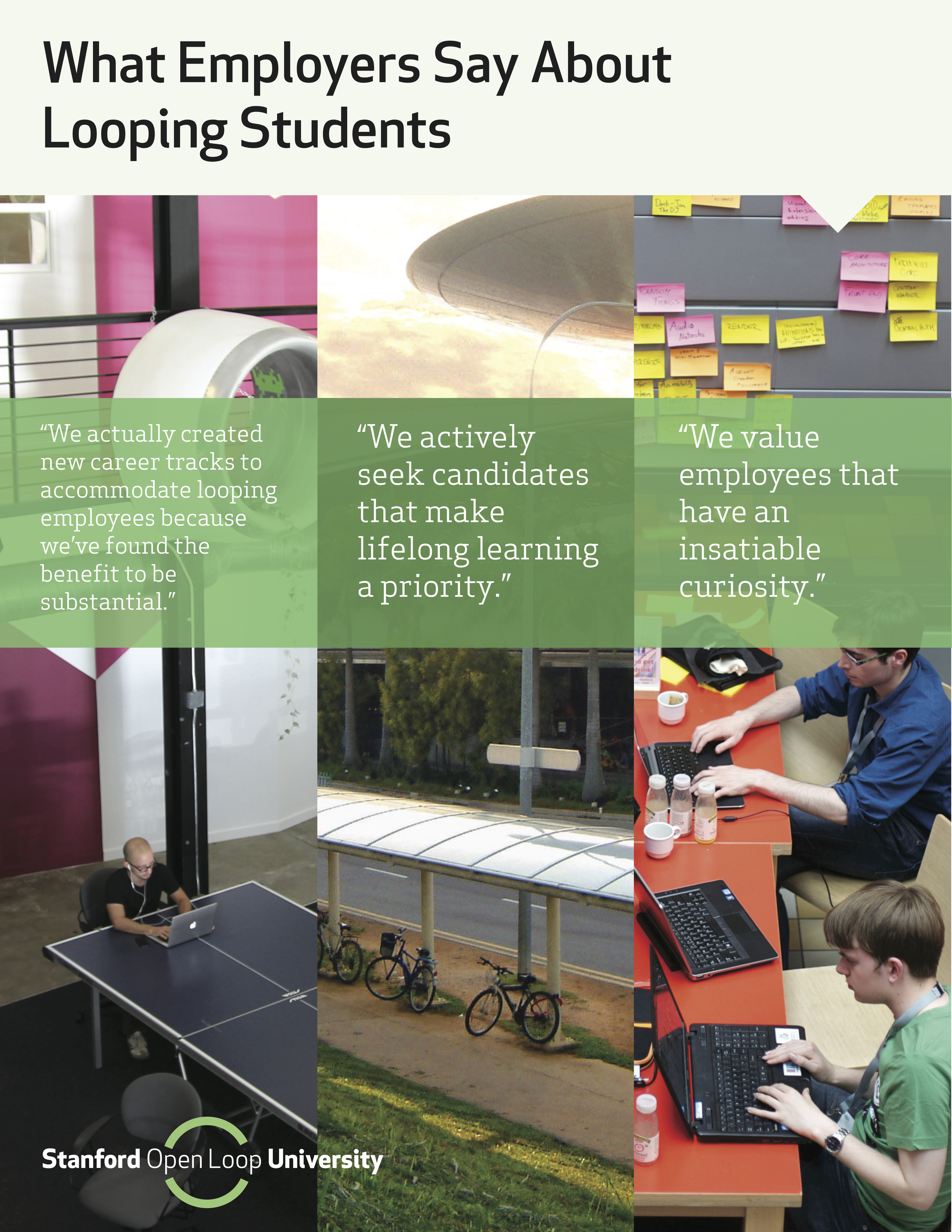
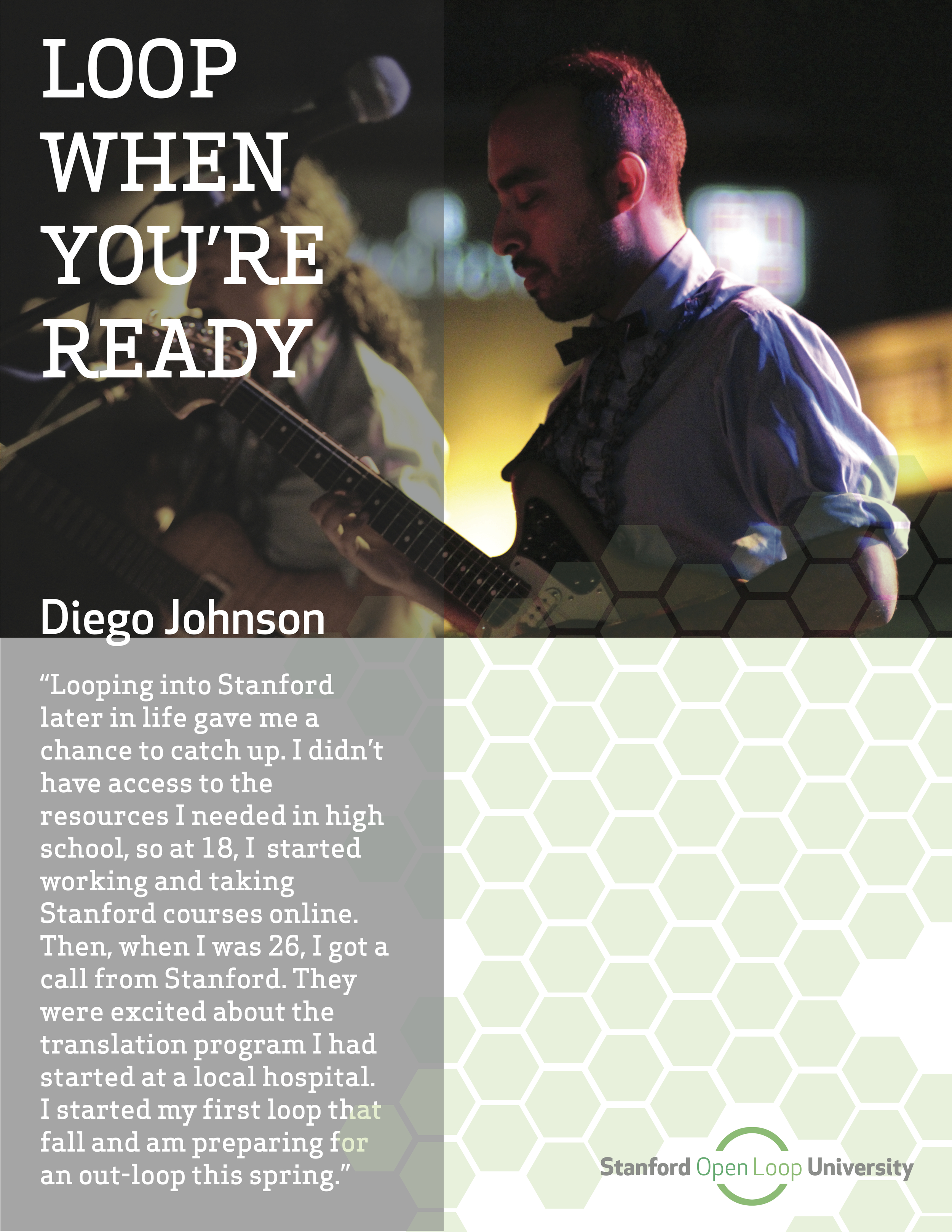
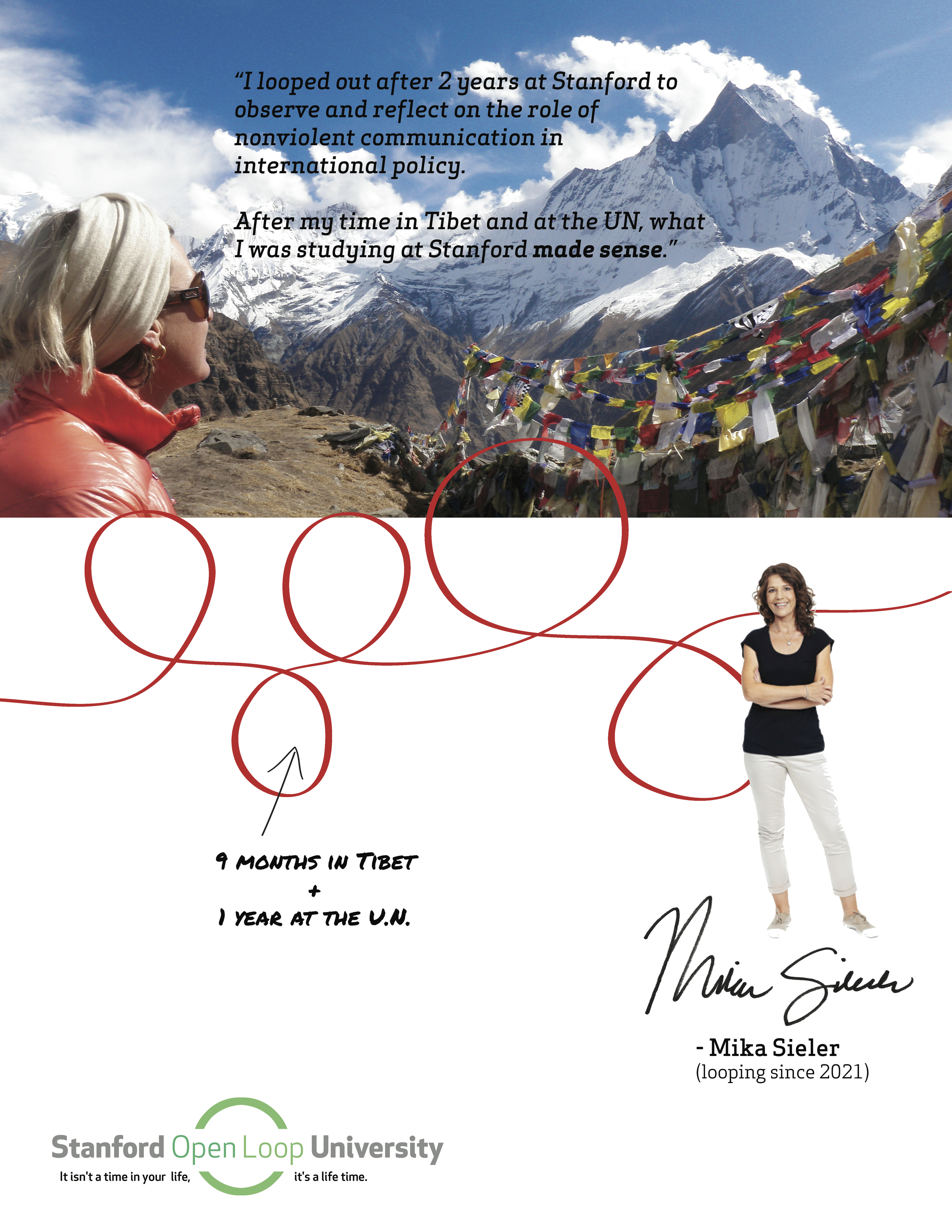
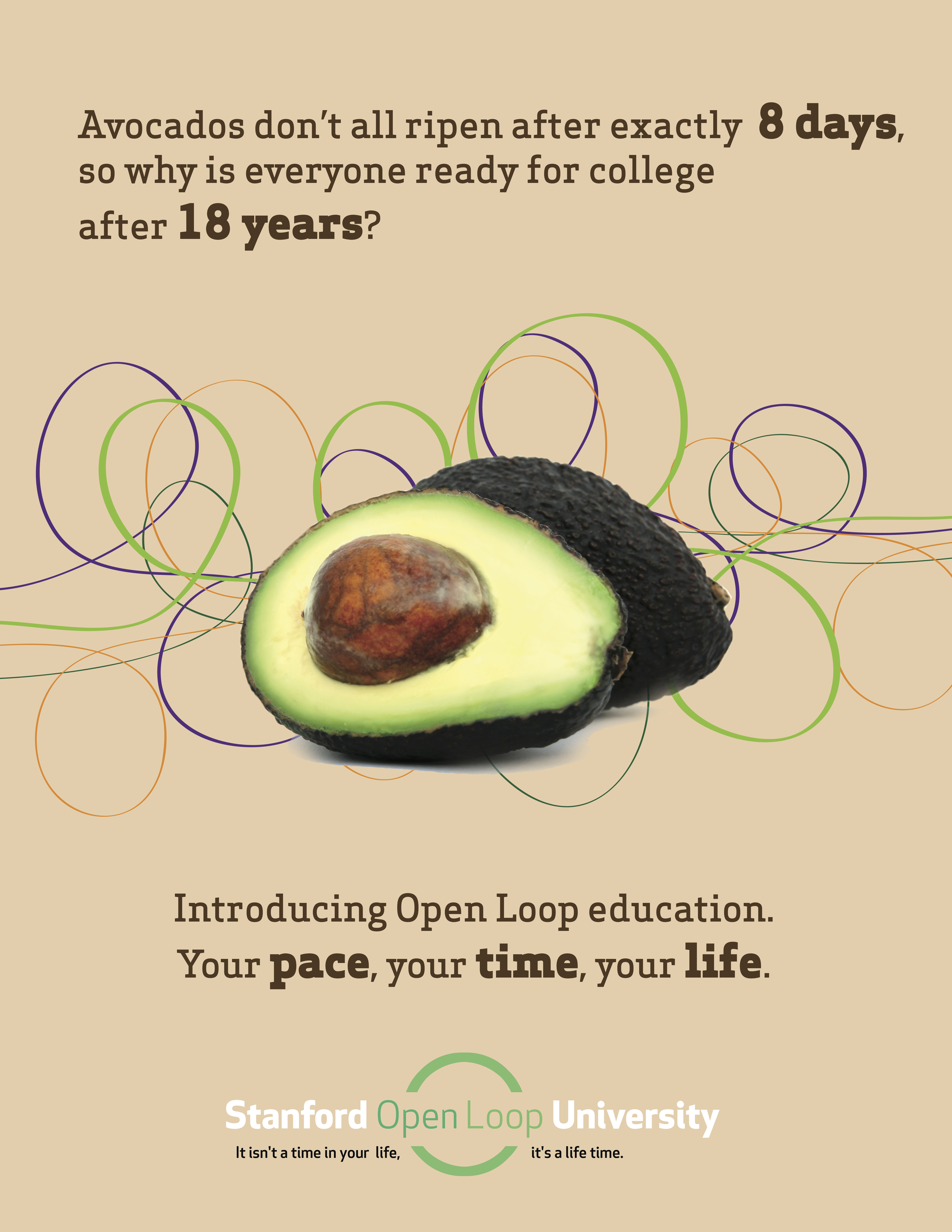
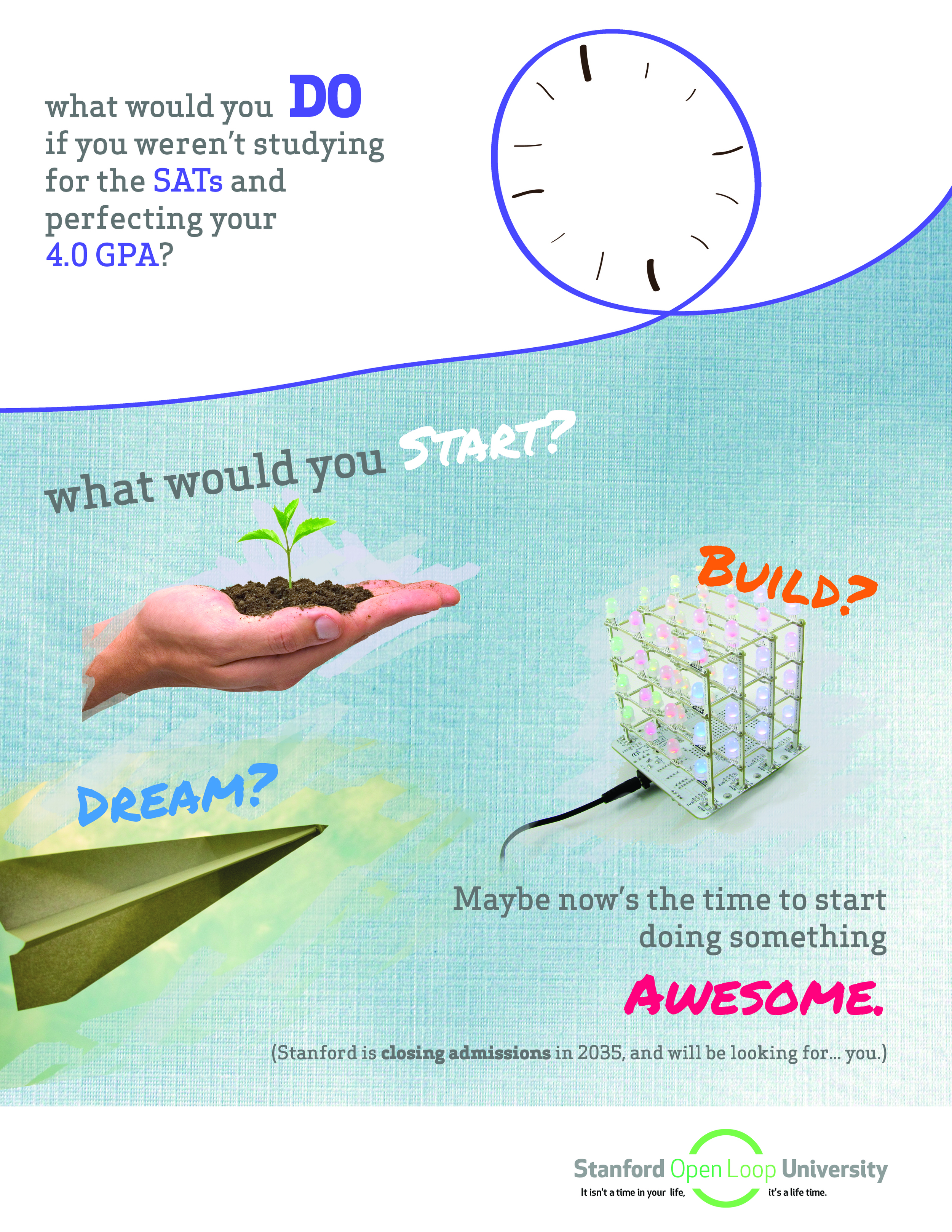
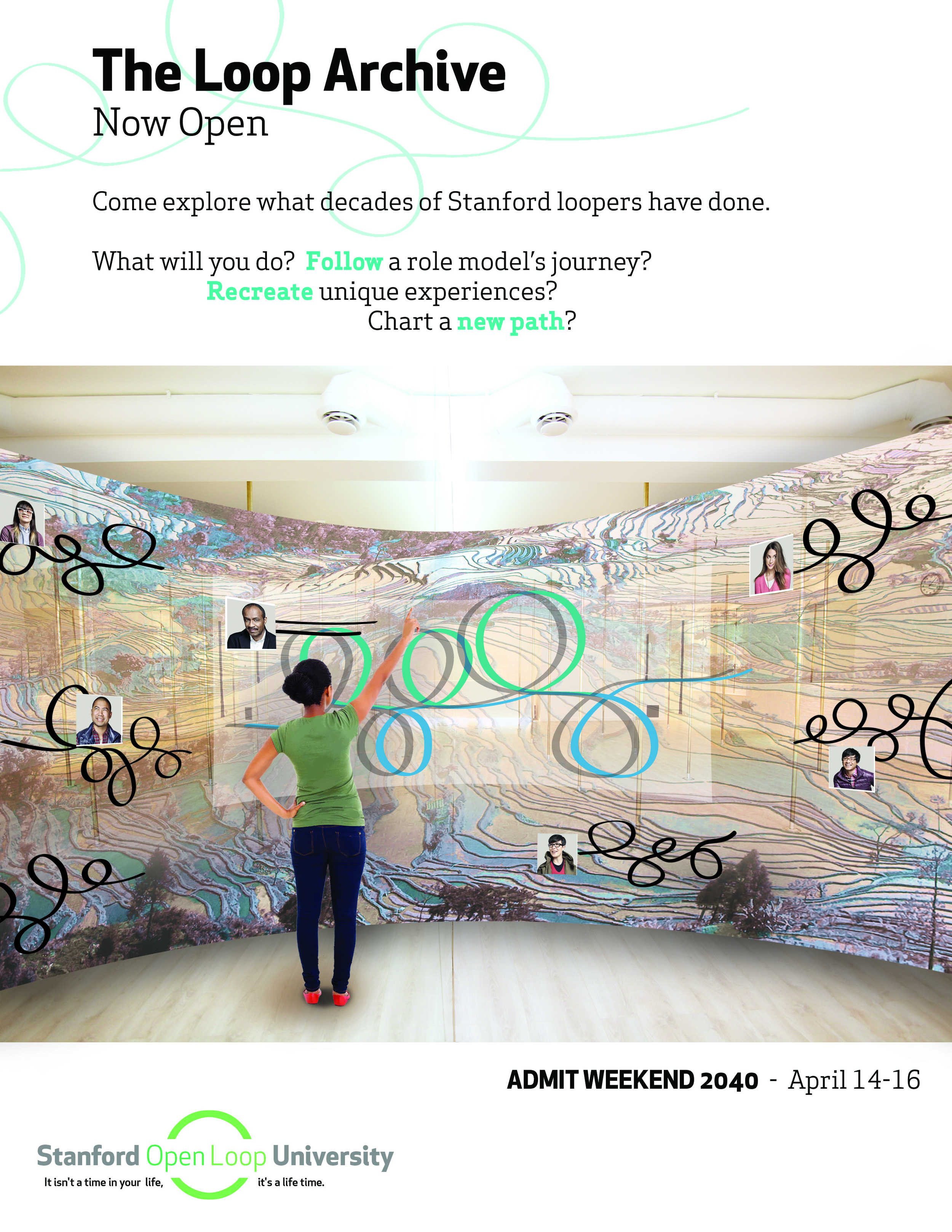
ARTICLE 65
C3 Reader
Apple iPad (early “tablet“ device), Kiosk
Cardinal Community Currency, commonly called C3, was a community currency system proposed shortly after Open Loop was announced in 2016. Students were able to spend their credit on everything from courses to coffee on campus, and after completing a Mentorship and/or Teaching C3 Certification, they could begin earning credit back.
Populi could earn C3 by teaching master classes or mentoring students and could spend their C3 on anything from Rose Bowl tickets to MBA tuition.
Faculty were able to earn C3 by teaching courses beyond their appointed requirements and could trade in their earned C3 for additional research funds or sabbatical time.
This is one of the original C3 Readers placed in Tresidder Union during the 2016 pilot program. The user interface allowed students to check their C3 balance with a fingerprint.
Watch Video of Ashish Goel explain Cardinal Community Currency.
ARTICLE 35
Loop Origins
Found notebook pages from early 21st century professor, Petr Johanes
Professor Petr Johanes was deeply involved in the 2015 experiment led by the Dean of Admissions that admitted 10% of the following year’s incoming class using “age-blind” admissions. This would eventually become Open Loop University.
Shown here for the first time, the paper sheets displayed are found pages from Johanes’ initial thoughts and experiments with loops as a PhD student in Stanford’s School of Education. Johanes meticulously documented his own loop and spiral trajectories and synthesized and reflected upon his experiences. As was common in the early 2010s, Johanes often performed work on his computing device and printed results on traditional paper.
Watch Video of Petr Johanes explain his Loops
Time Traveler reviewing the work of Petr Johanes
View Petr Johanes' Loop + Spiral Papers Gallery

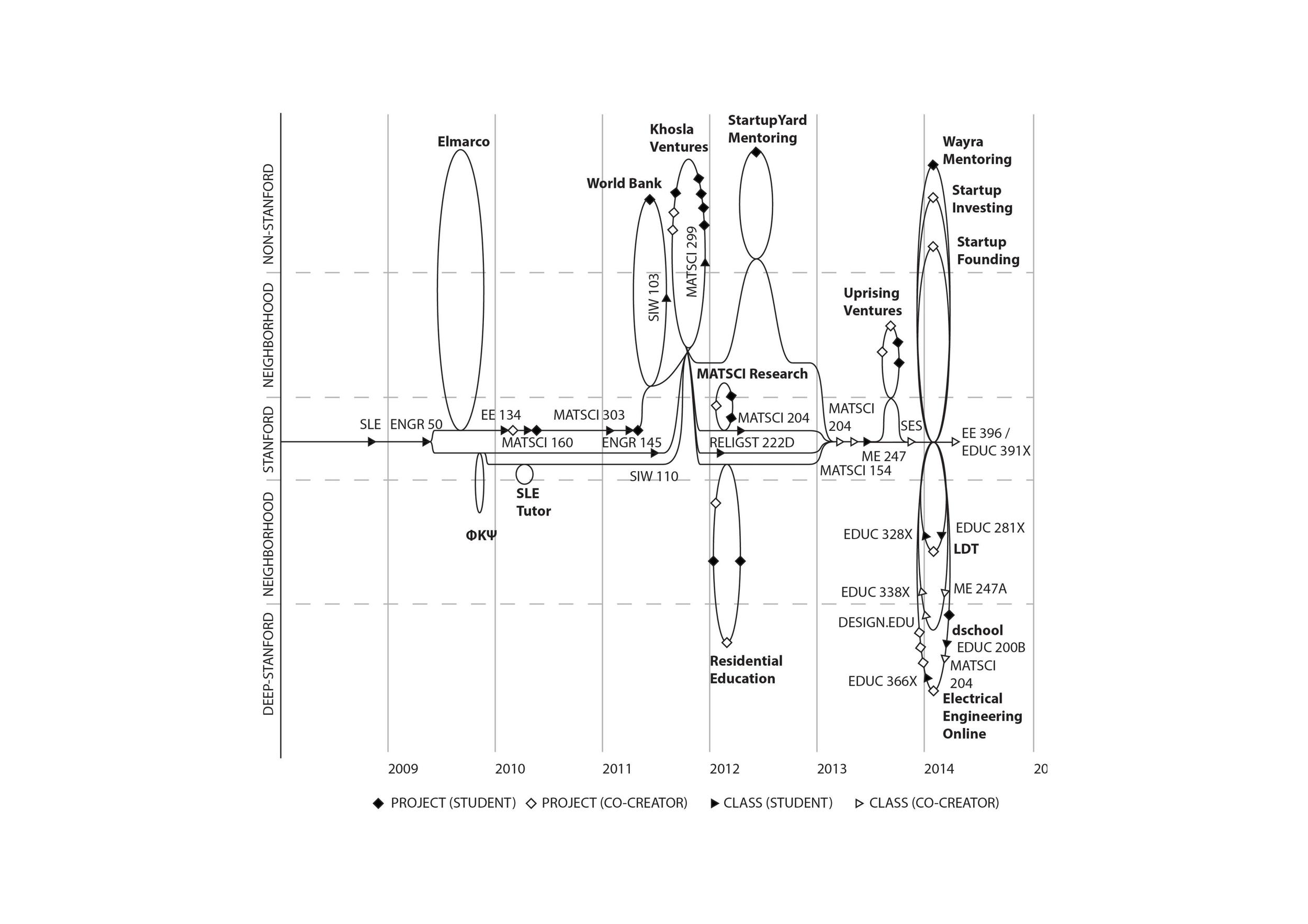

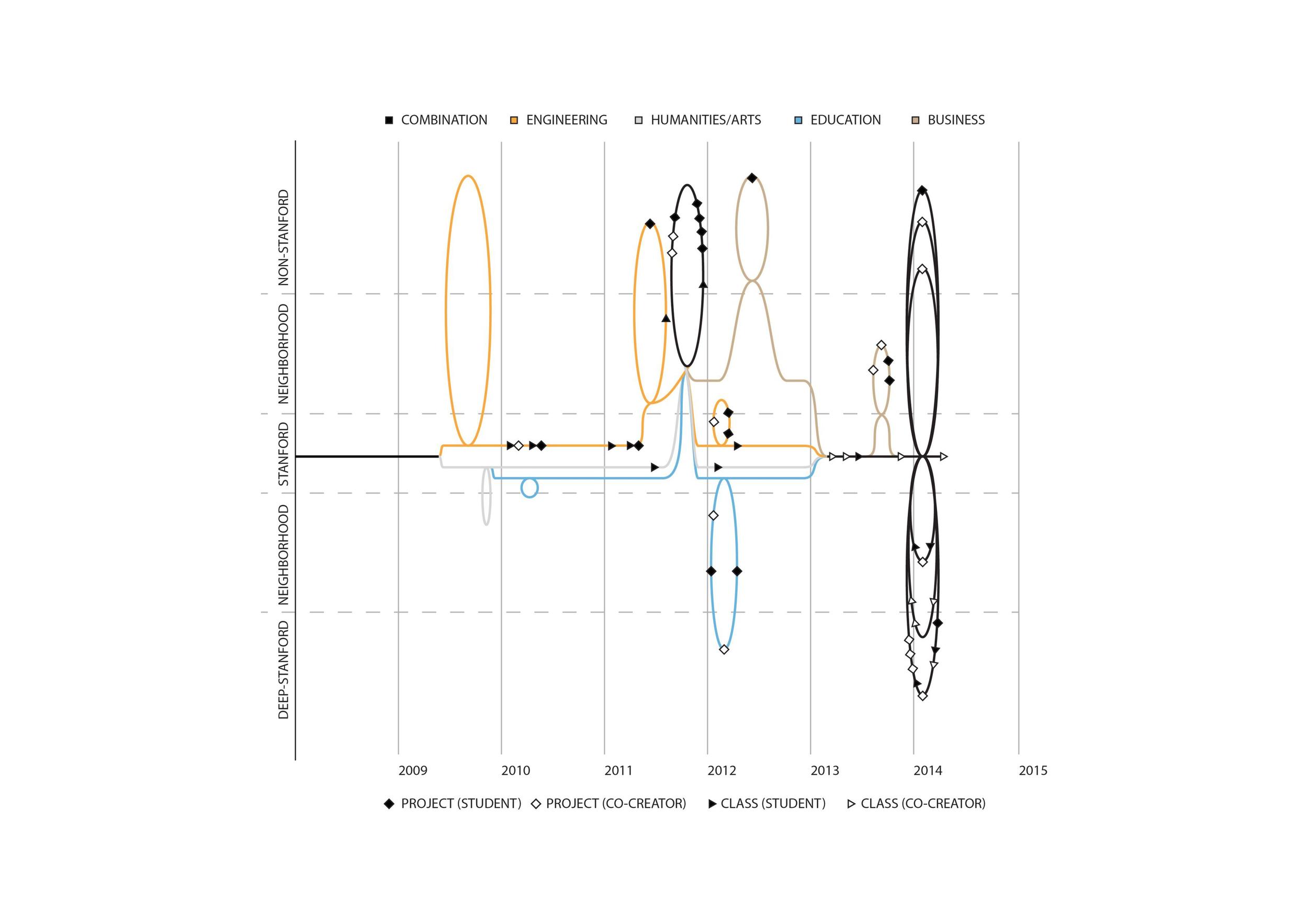
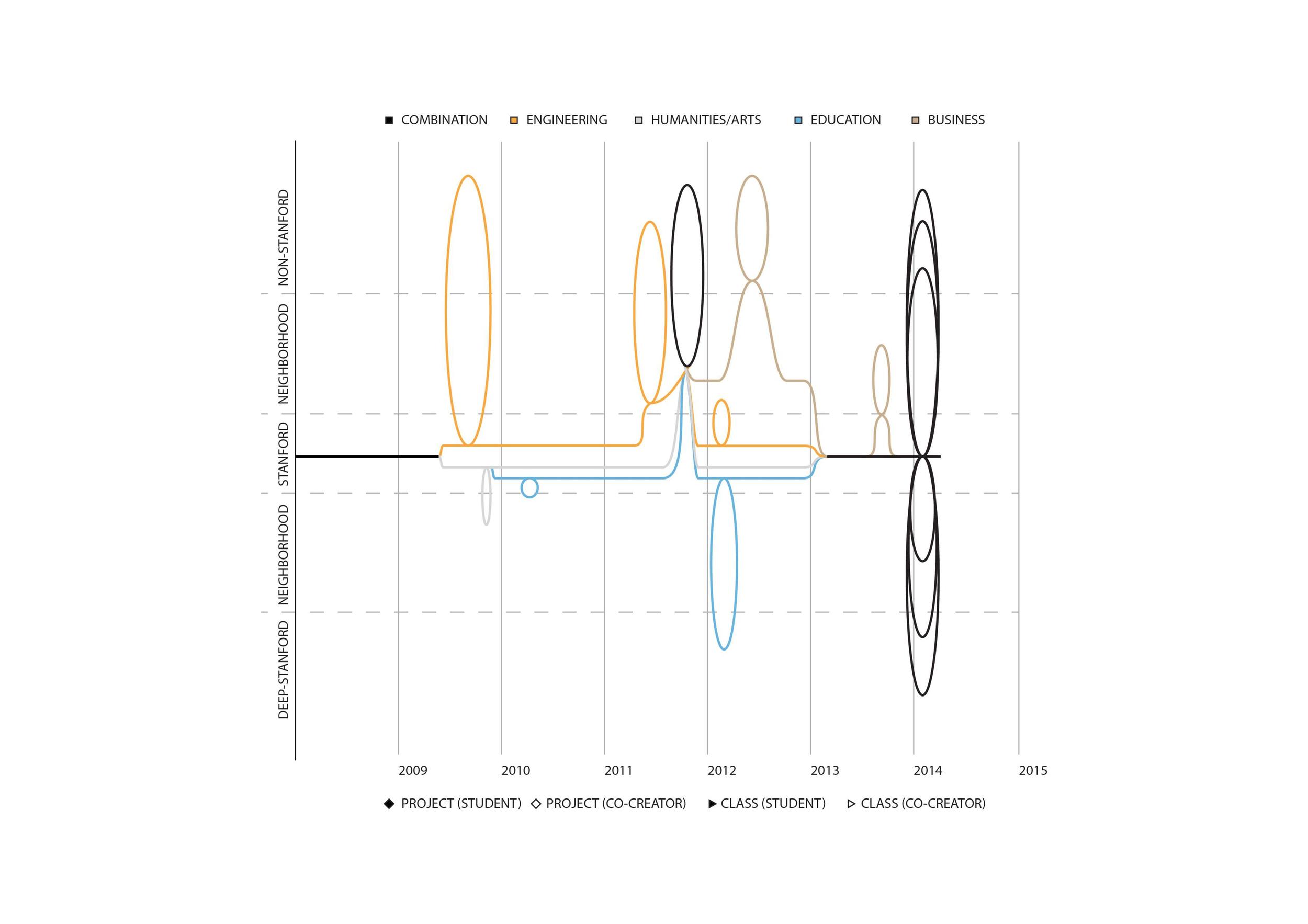

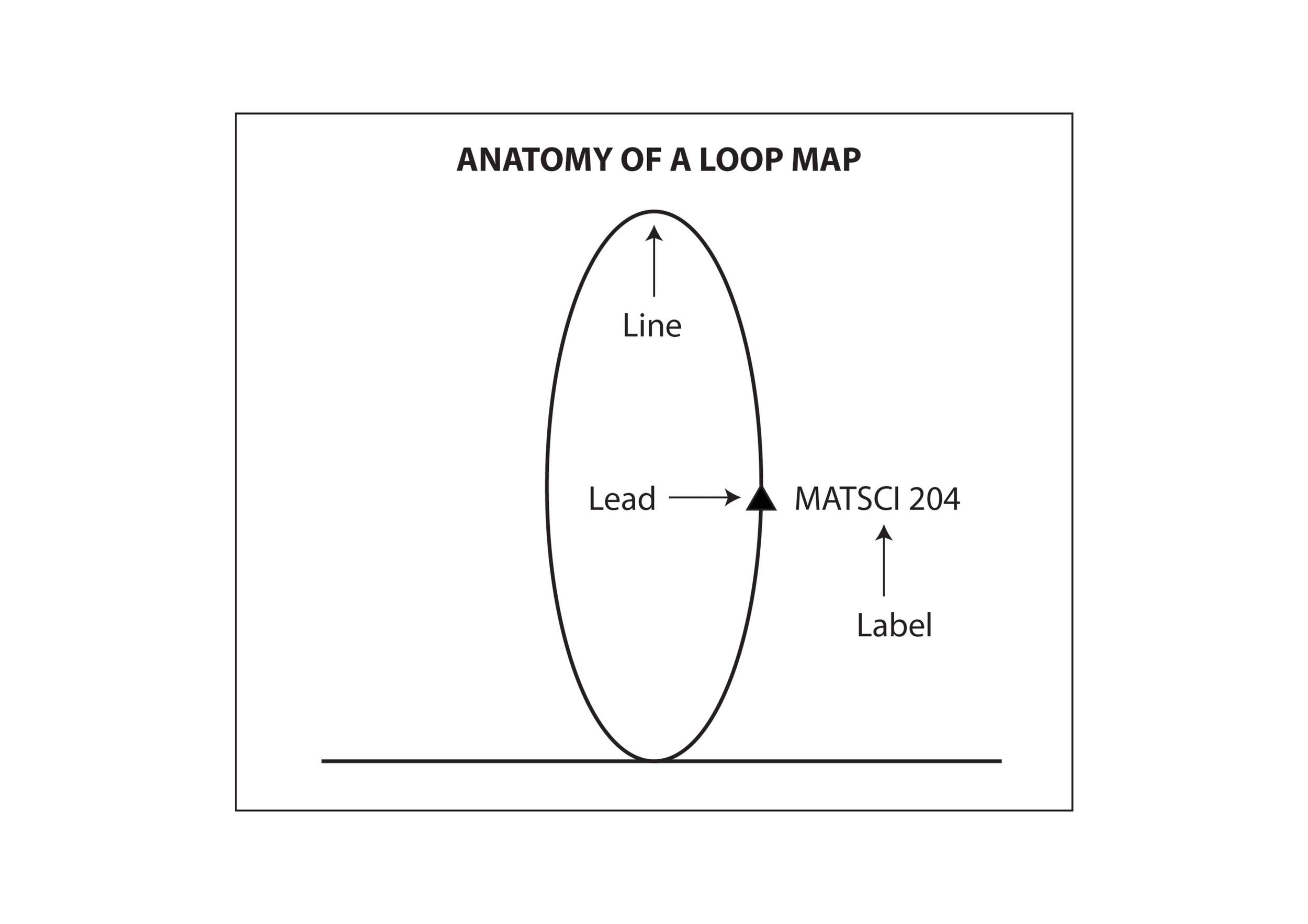
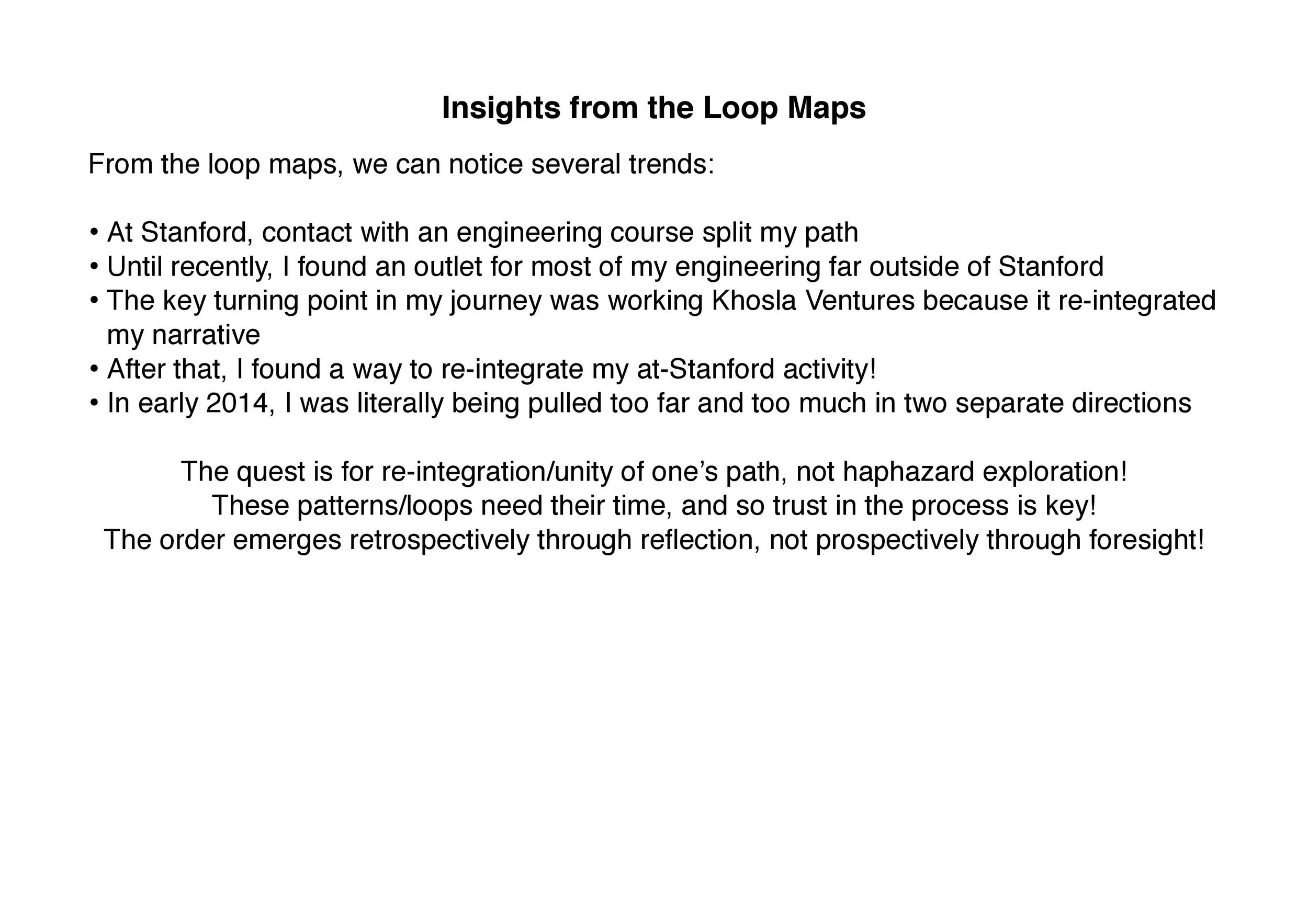
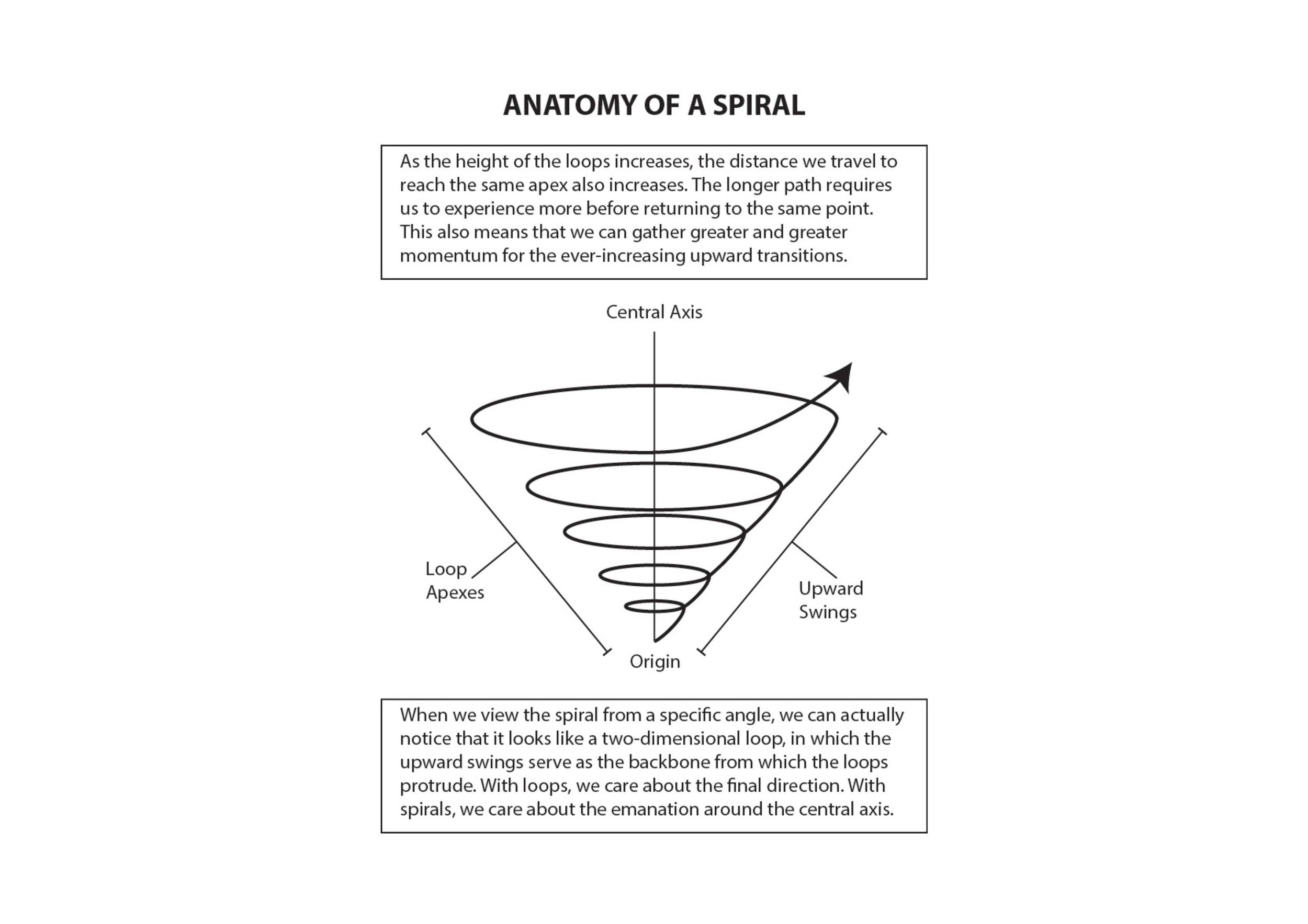
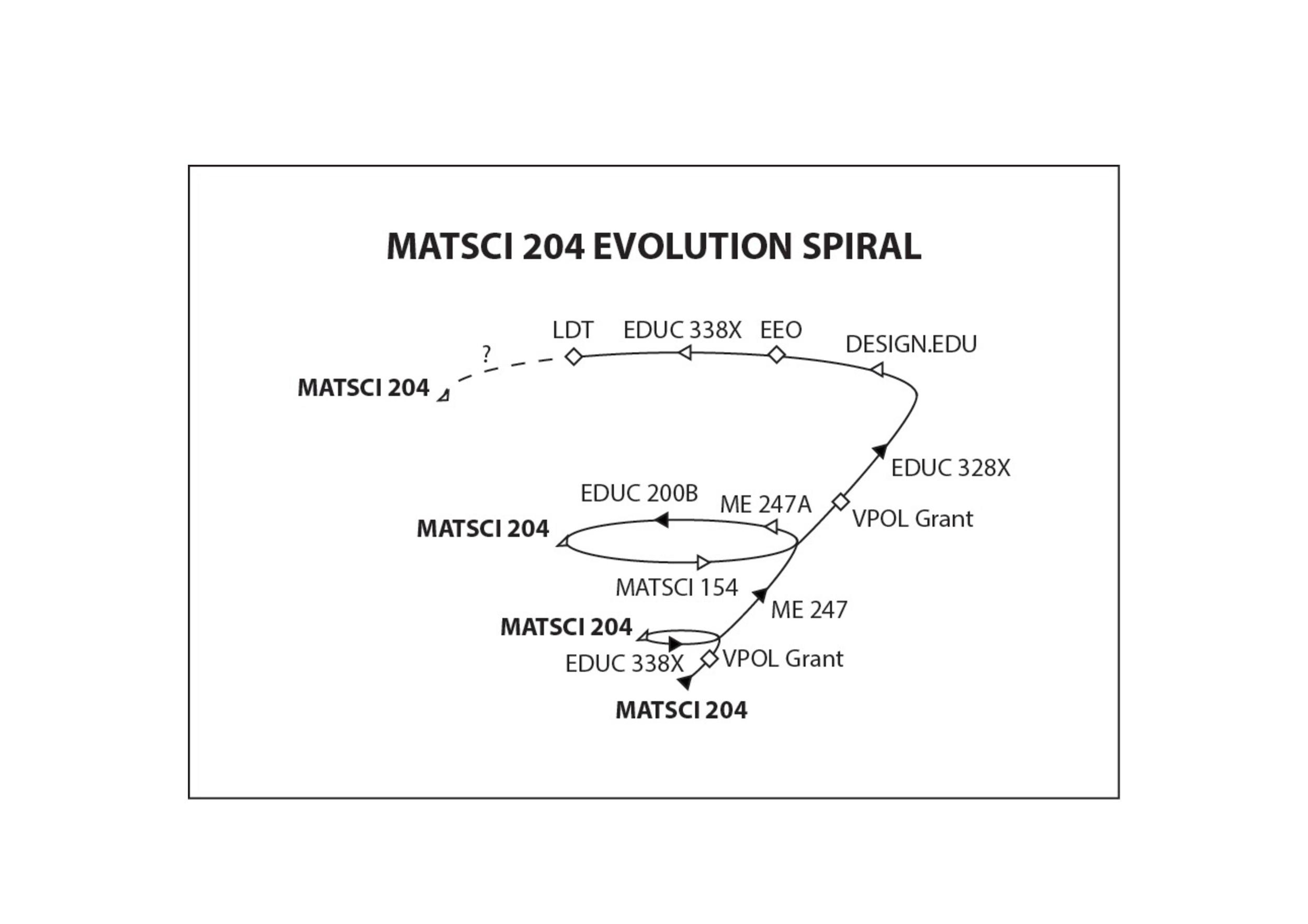
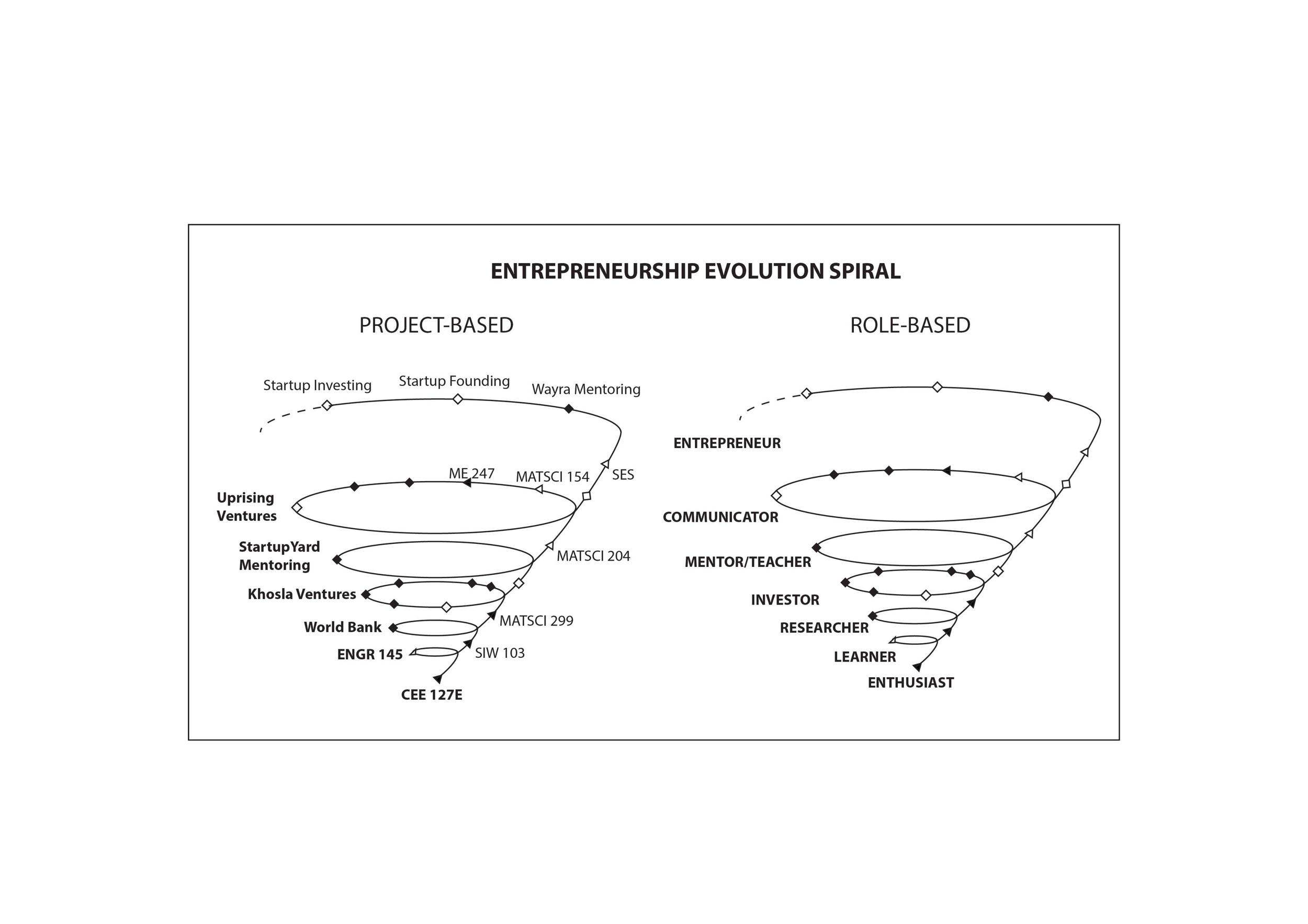
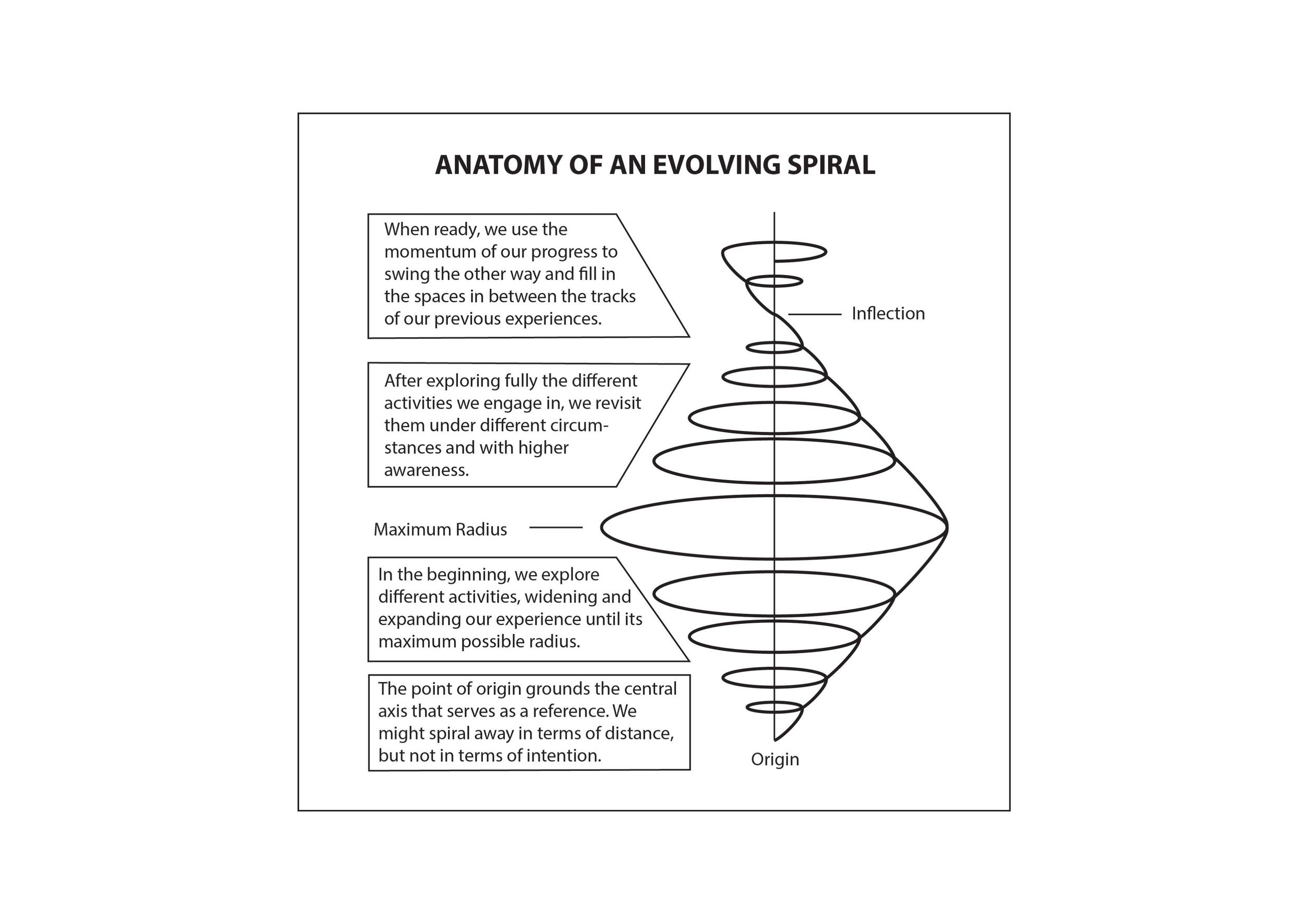
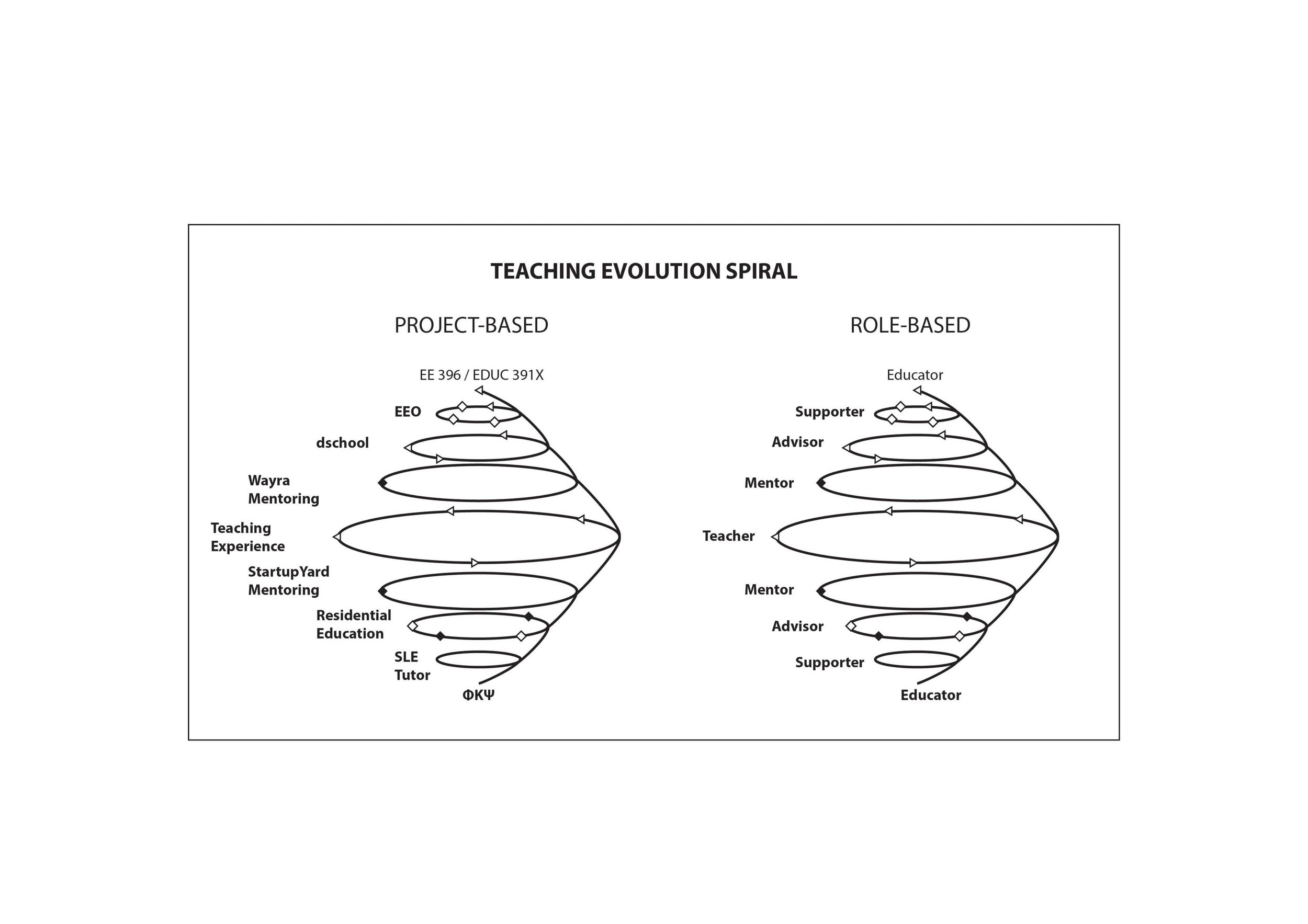
ARTICLE 55
From Application to Invitation
Audio recording circa 2015
In 2015, the Stanford Office of Undergraduate Admissions experimented with an admissions process to replace applications and began to recruit students to come to Stanford rather than requiring them to apply. A phone call from a recruitment officer replaced the lengthy application process.
To find candidates, recruitment officers matched a rigorous, “age-blind” open nomination process with a rotating pool of expert nominators and an anonymous review board. The board cycled annually to ensure that the process was fair and the quality of invitees was high.
By 2016, 10% of students were admitted via invitation. Six years later, Stanford and 28 other universities were using invites instead of applications for the vast the majority of their students.
The impact on high school education and college preparation was profound: students and teachers alike shifted focus away from test performance and on to following personal passion and showing evidence of impact.
Watch Video of Scott Doorley explain Application to Invitation
Time Traveler listening to a Stanford Invitation
Learn More About...

Box ID: PE 3.123.147
Paced Education Articles
Box ID: PE 3.123.147
Paced Education Articles
Watch an Overview of Paced Education
ARTICLE 67
Grit Bit & Growth Grid
Organic Semiconductors, & Molecular electronics, Acetate Applicator
Applied as a temporary tattoo, even these early 1st generation Grit Bits were able to provide context around learning goals, helping students become self-aware, adaptable learners.
The original Grit Bit tracked stress & mood, physical & social activity, and location. Detailed data were available only to the individual student, while a small amount of anonymous aggregate data were available to the university on an opt-in basis.
Student Growth Grids (displayed here on Apple iPads—early "tablet" computers) were used to set learning goals, place them in context, and set activity reminders; allowing students to reflect on the conditions contributing to their learning progress and to experiment with new ways to learn and live.
Watch Video of Tania Anaissie explain Grit Bits.
Grit Bits available for Time Travelers to take home
Future Docent explains Grit Bit to Time Traveler
ARTICLE 64
Calibration Dashboard
Digital interface snapshot showing learning goals and micro-courses
During the Calibration phase, every student had a personalized dashboard to set, track, and reflect upon their learning goals. Because the goal of Calibration was for each student to learn how they learn best, students were tasked with setting learning goals every week. These goals included mastery of specific skills, practice with different styles of learning, attempts at new solo and collaborative behaviors, as well as experience in occupational situations.
Shown here is a snapshot of one student’s Calibration dashboard from the week of May 1, 2025. Note she’s attempted each learning goal to some degree. Following the dashboard is the series of micro-courses she enrolled in to further attempt her learning goals. Each micro-course mapped to a specific goal.
Watch Video Kelly Schmutte explain Micro Courses
Watch Calibration Dashboard Demo
ARTICLE 12
Cognitive Biofeedback Mirror
Human presence sensor, chemical barrier, digital readout
As students began to feel the benefits of Calibration via hyper-adaptive and responsive monitoring devices like the Grit Bit and Calibration Dashboard, numerous startups sprang up in the nascent domain. The Cognitive Biofeedback Mirror, often nicknamed the “Hormone Mirror,” was the flagship product of one such company led by early 21st century student Jesse Day.
The hormone mirror was an early attempt at modern bio-mnemonic calibration. After selecting their academic courses and extra-curricular engagements, students would periodically check in with the hormone mirror to determine if any changes needed to be made to optimize mental, emotional, and physical well being.
The hormone mirror was first implemented at Stanford in 2020, after it was found that the cortisol (stress hormone) level was so high in the undergraduate population that it was inhibiting the function not only of serotonin (happiness hormone) but also of dopamine (reward hormone), which is a key indicator of learning.
Watch Video of Jess Munro use a Cognitive Biofeedback Mirror
ARTICLE 17
Selecting A Personal Board of Advisors
Recovered time capsule photograph
The transition moment between one’s Calibration and Elevation phase was characterized by a famed experience, fondly referred to as “The Meeting,” with one’s Personal Board of Advisors. It was the collective decision of the group whether the student had self-calibrated and was prepared to move into a phase of deep focus in Elevation.
This photograph was recovered from the time capsule of the first group to pilot the Personal Board of Advisors. A new concept at the time, this group of mentors, coaches and confidantes was designed to provoke, challenge and celebrate the student in his or her learning journey.
Watch Video of Tania Anaissie explain Personal Board of Advisors
ARTICLE 59
New Spaces for Living and Learning
Digital diorama of phase-specific living and learning quarters
When Stanford transitioned to Paced Education and formatted its educational experience into 3 distinct phases of Calibration, Elevation, and Activation, it also rebuilt and repurposed the space on campus.
The images here depict spaces that were tailored to the distinct needs of students and faculty in each phase. Stanford became known for pioneering elegant and innovative new architectural designs that were mode-specific.
Watch Video of Kelly Schmutte explain Calibration Spaces

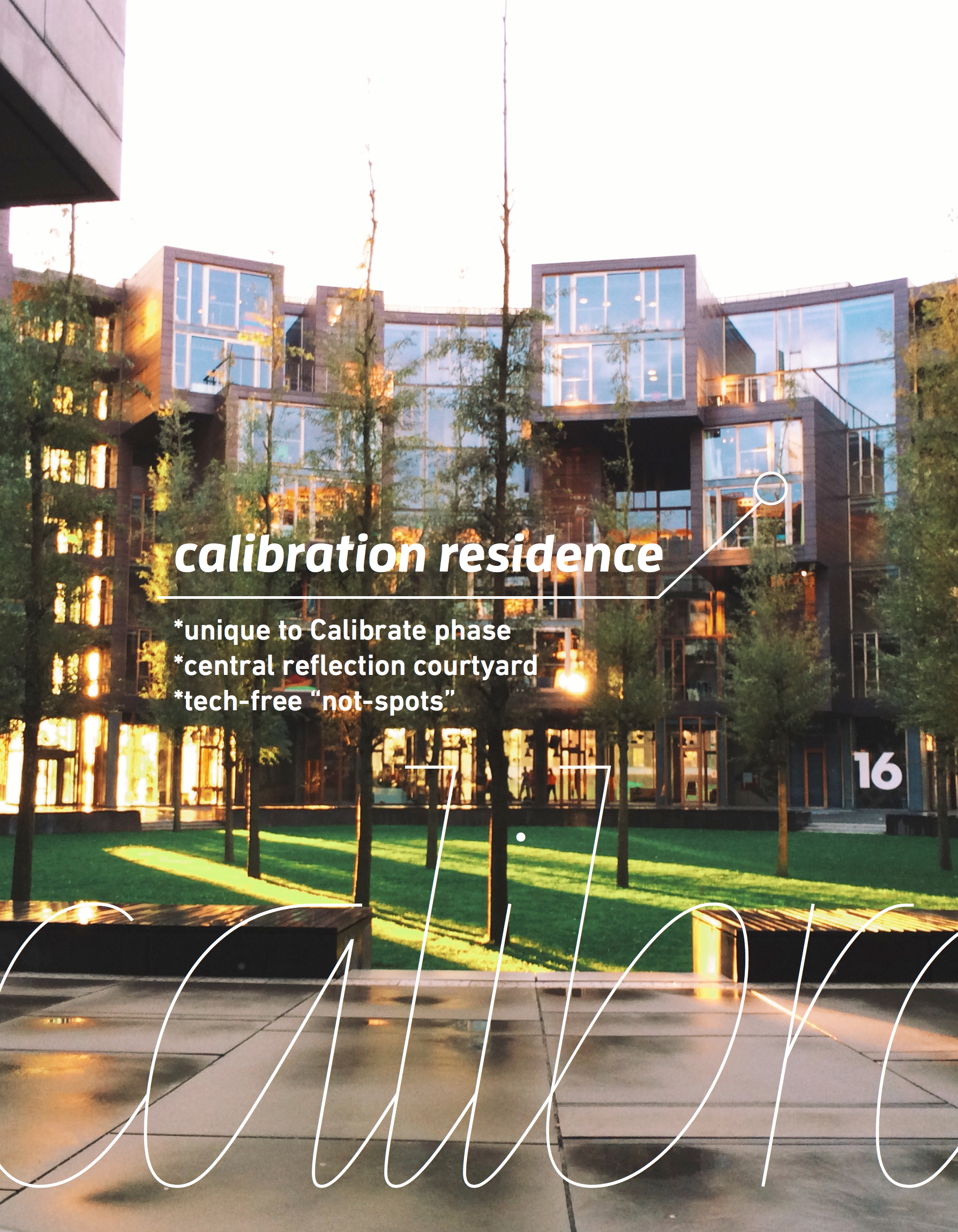
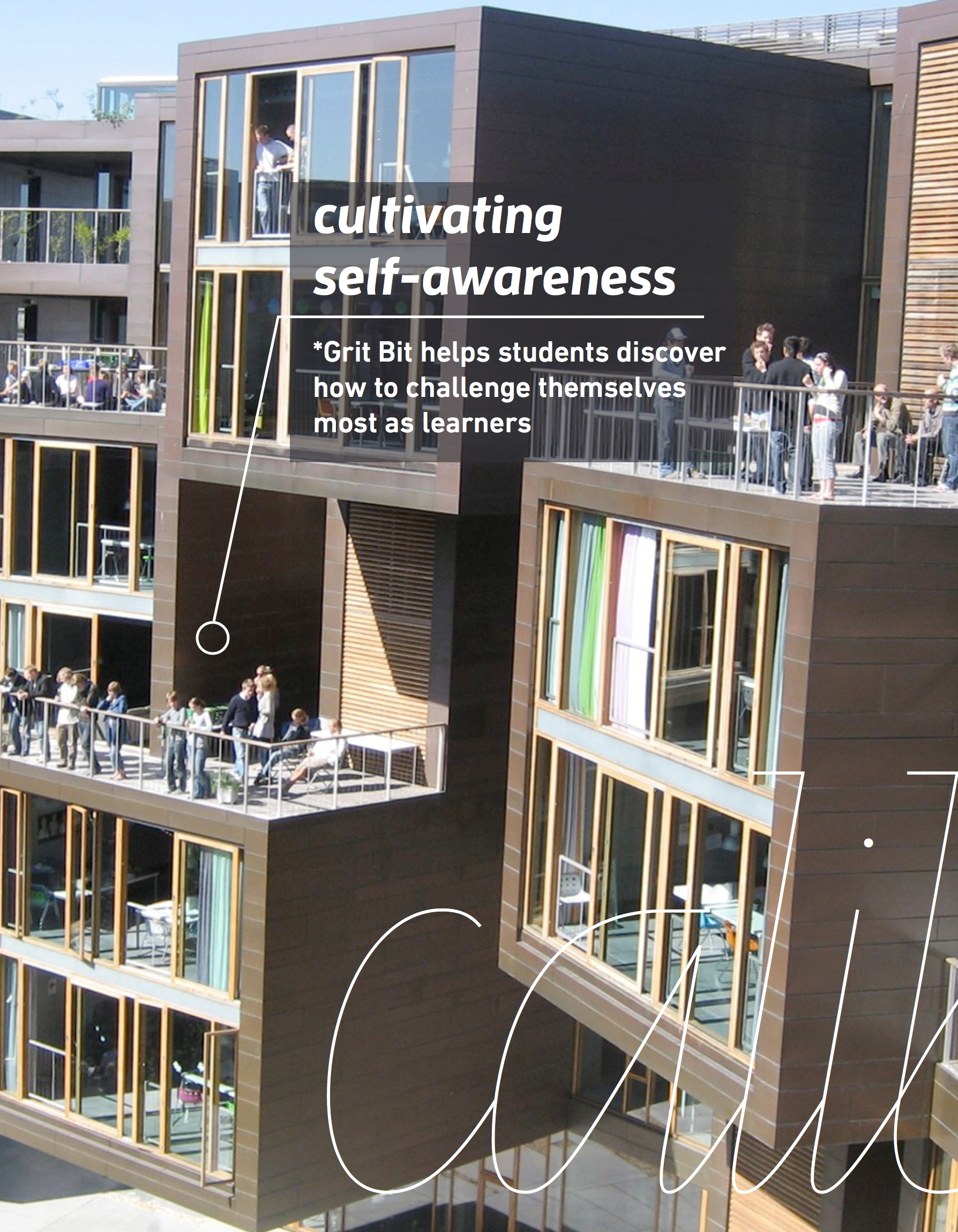
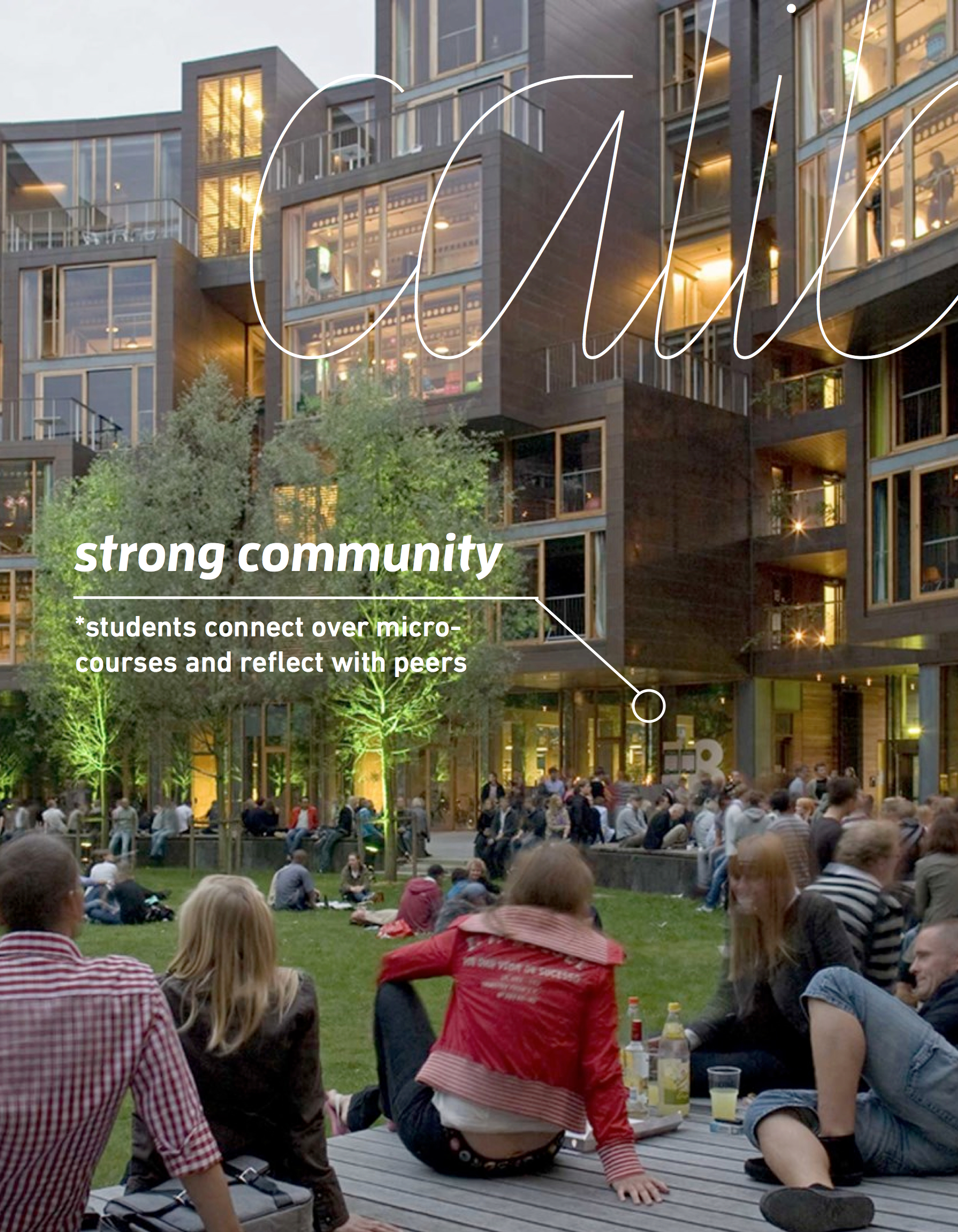
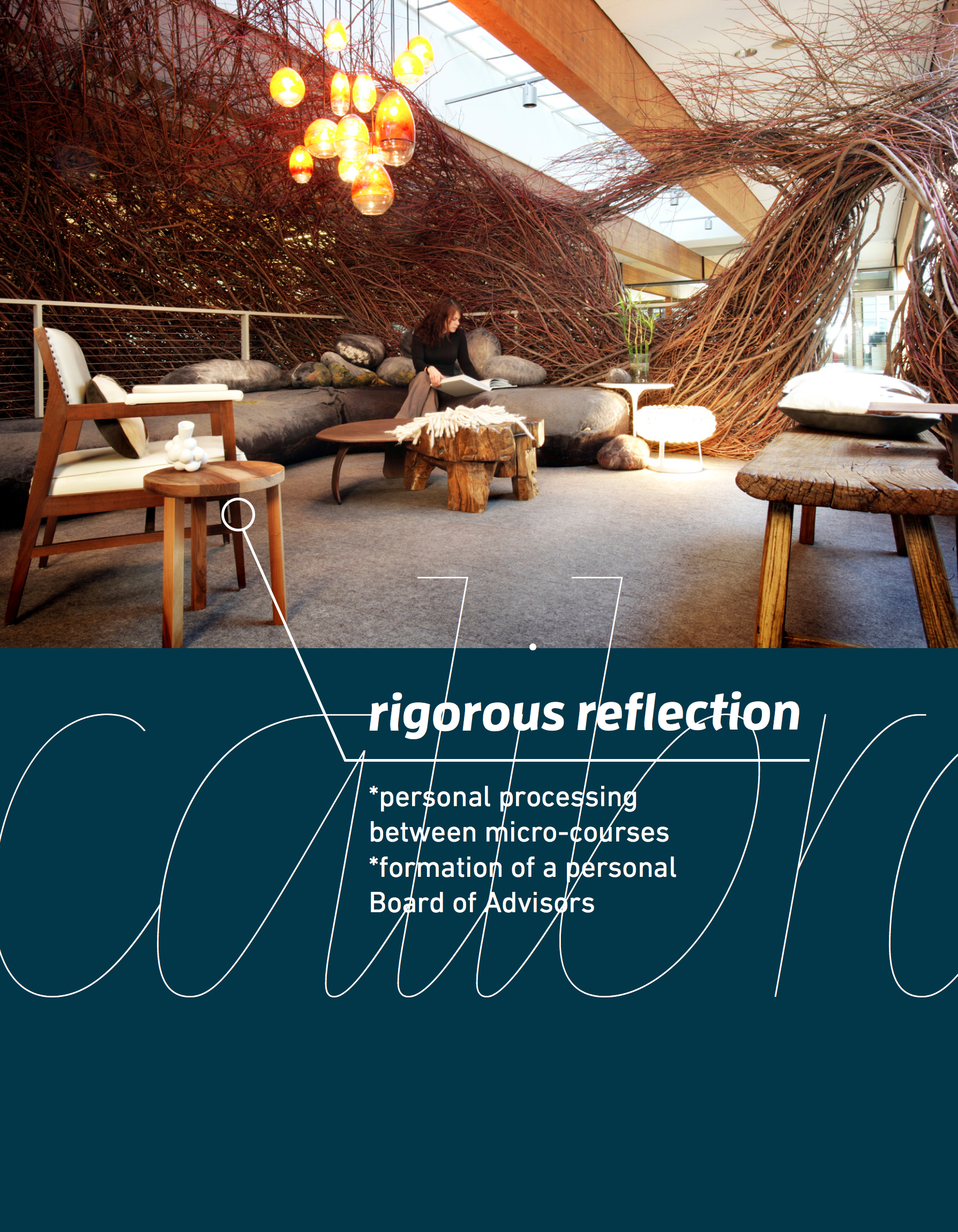
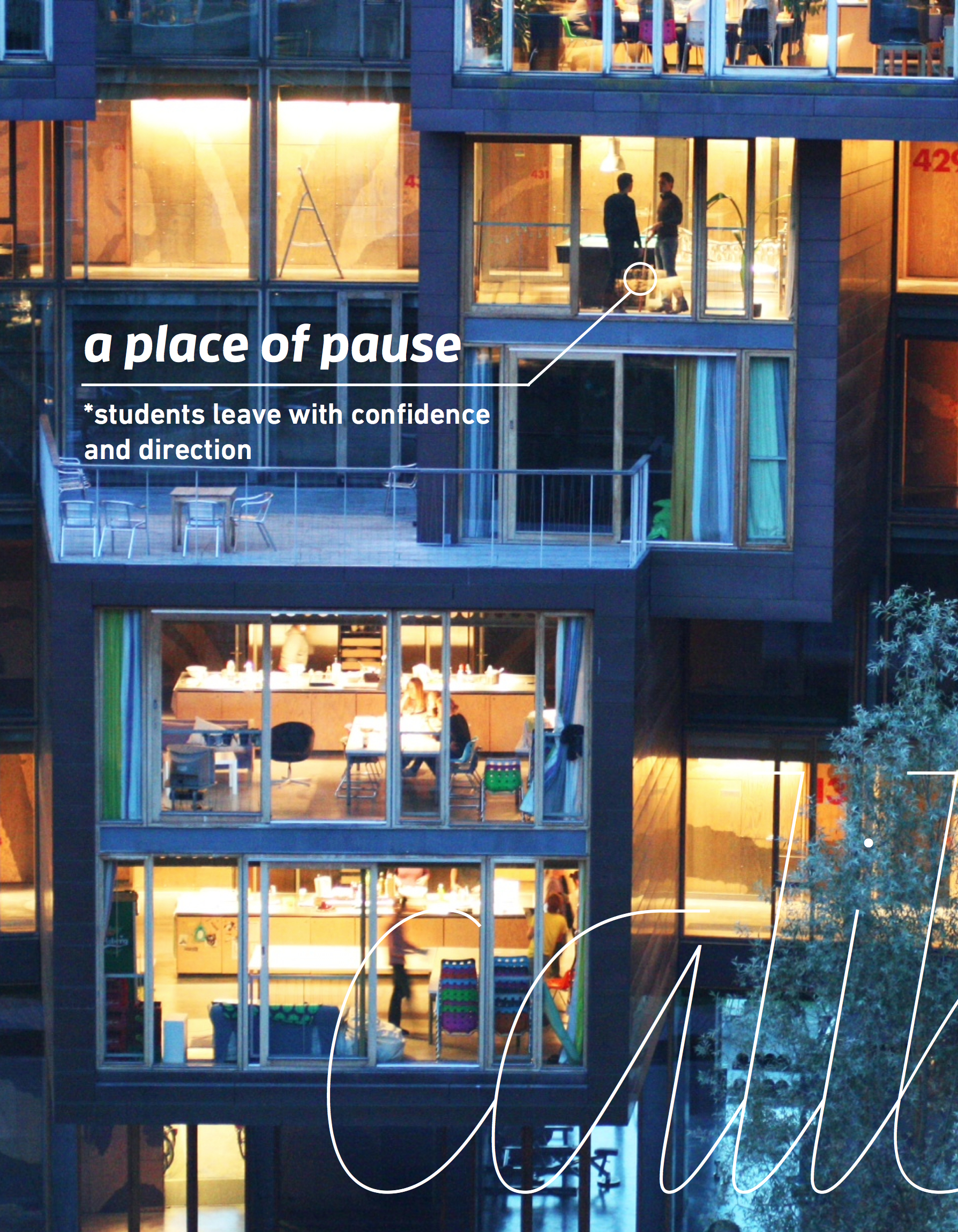
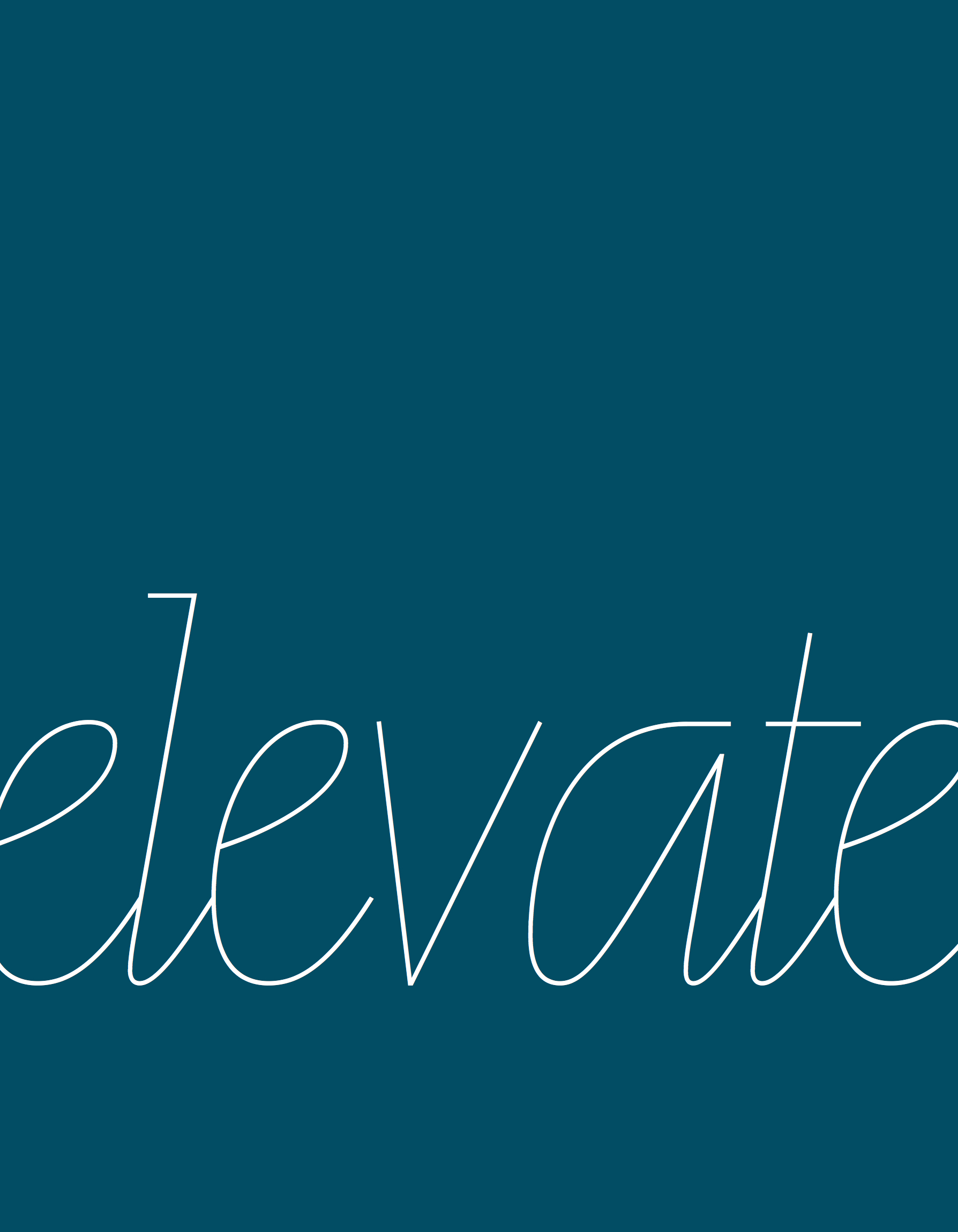
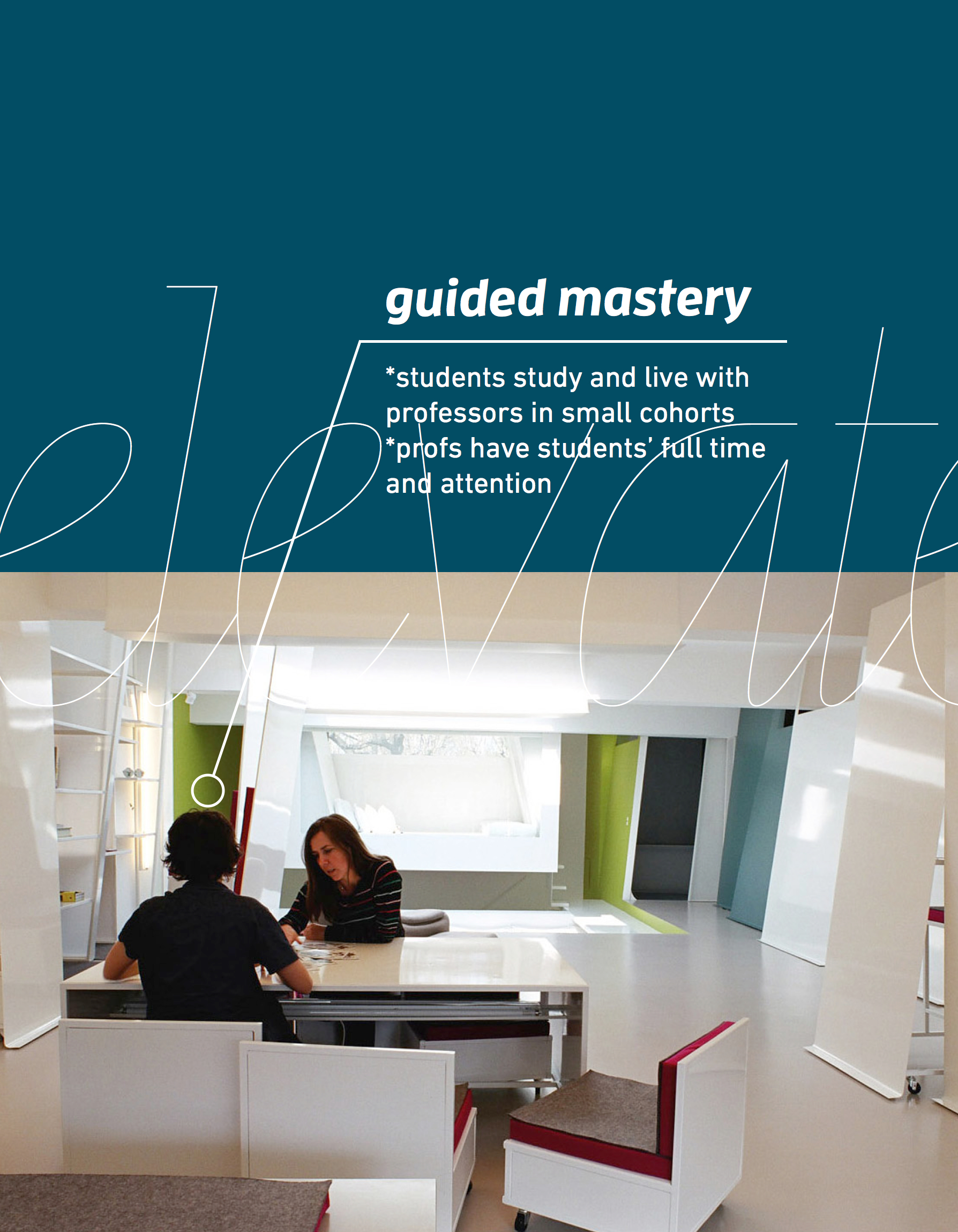
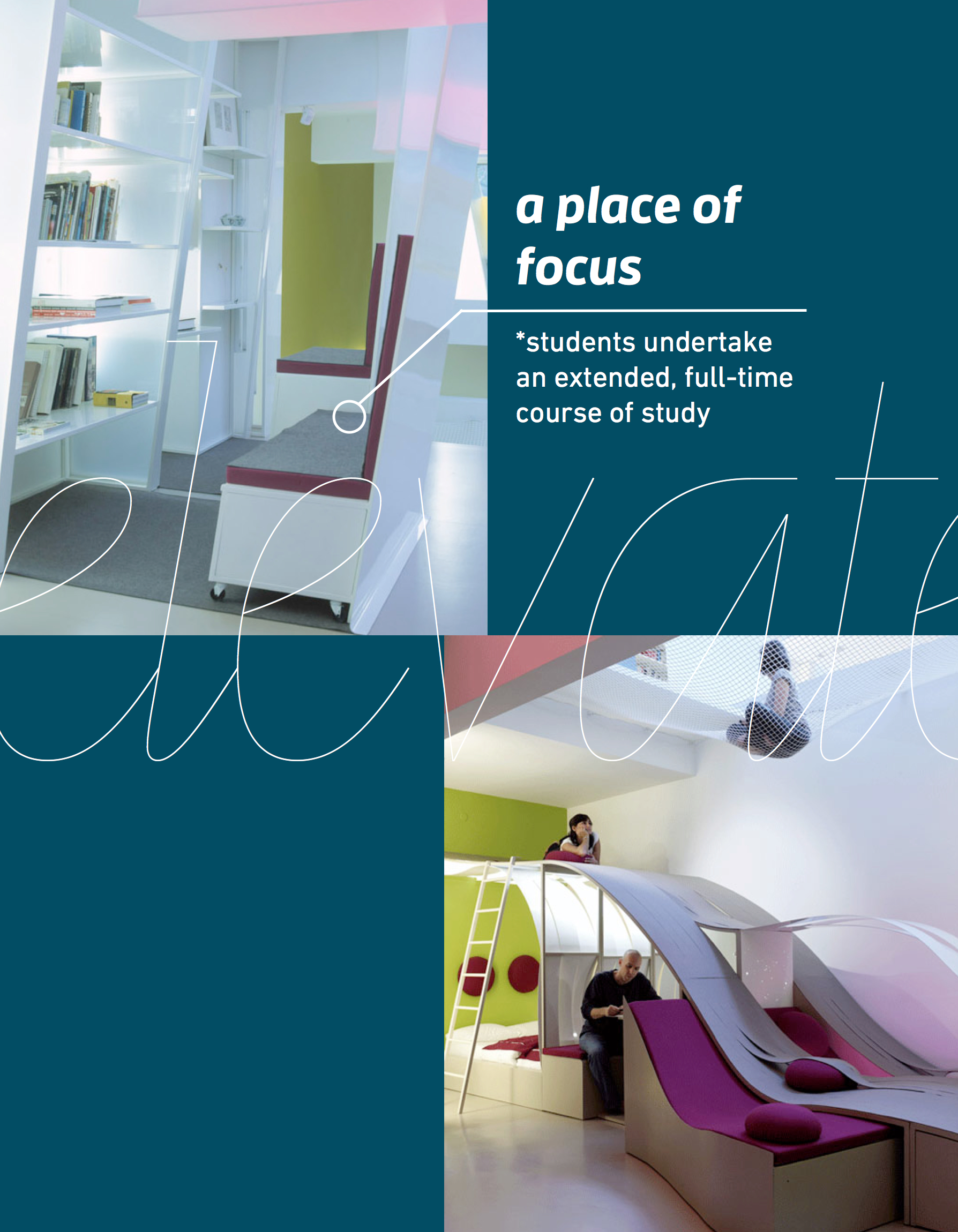
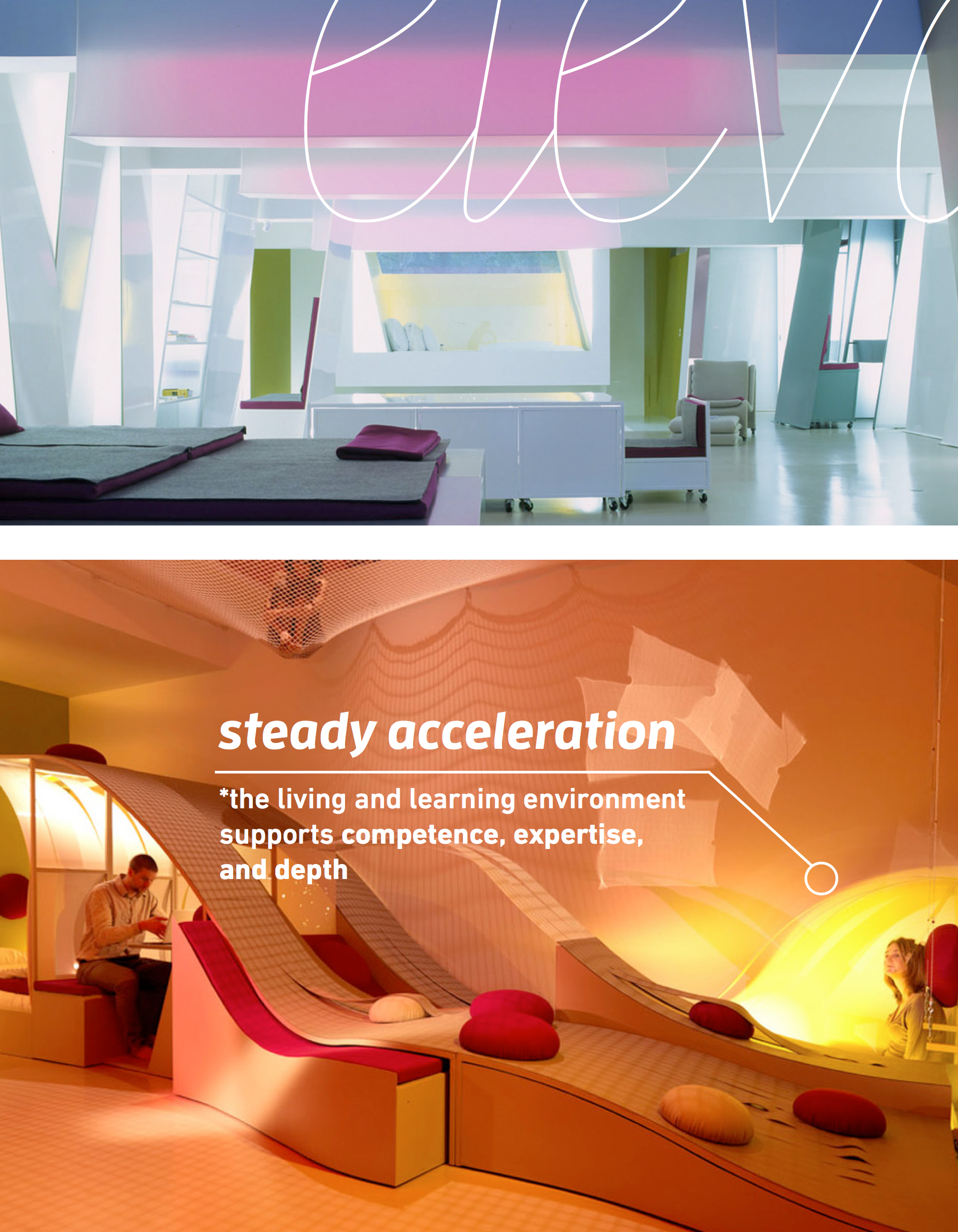
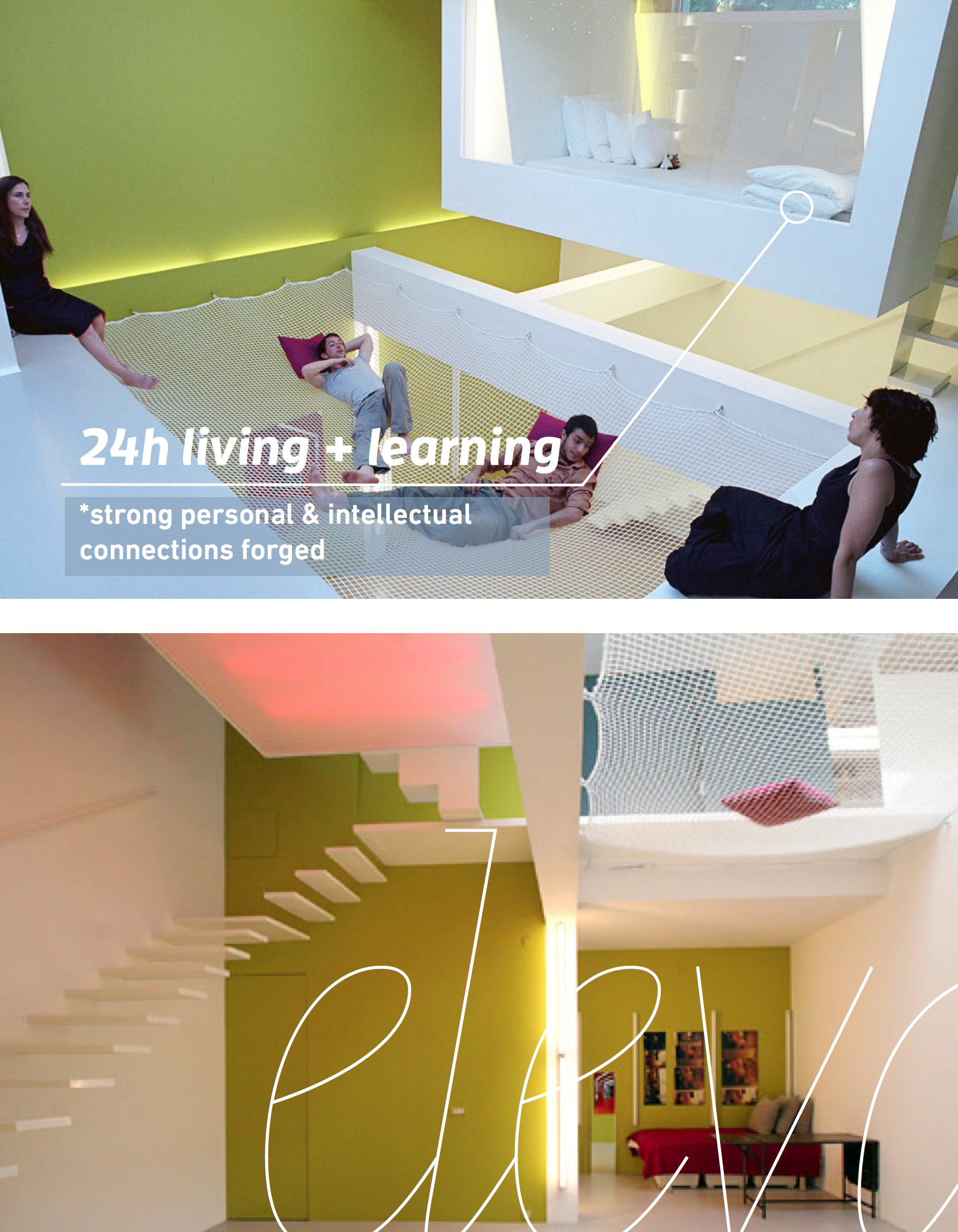
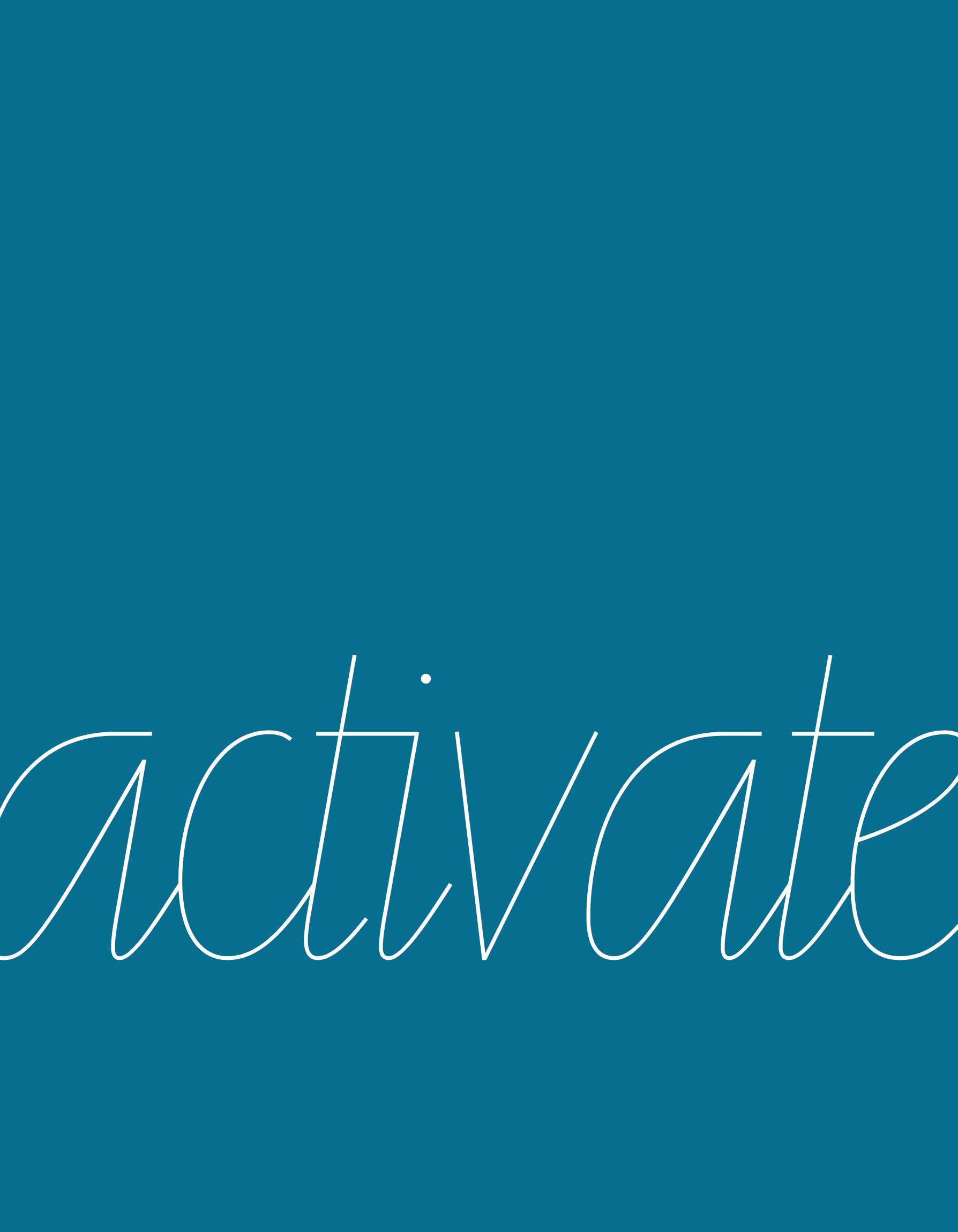

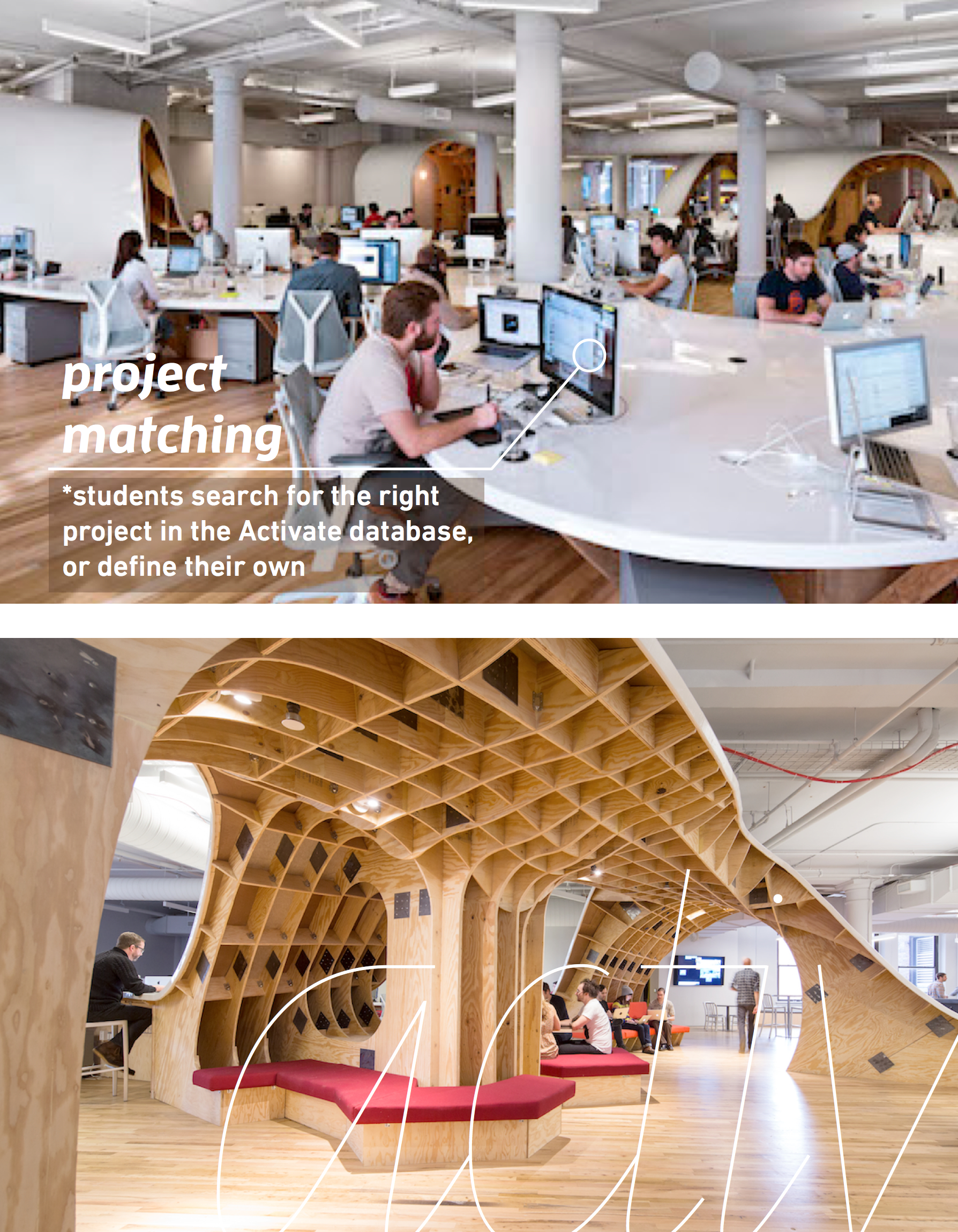
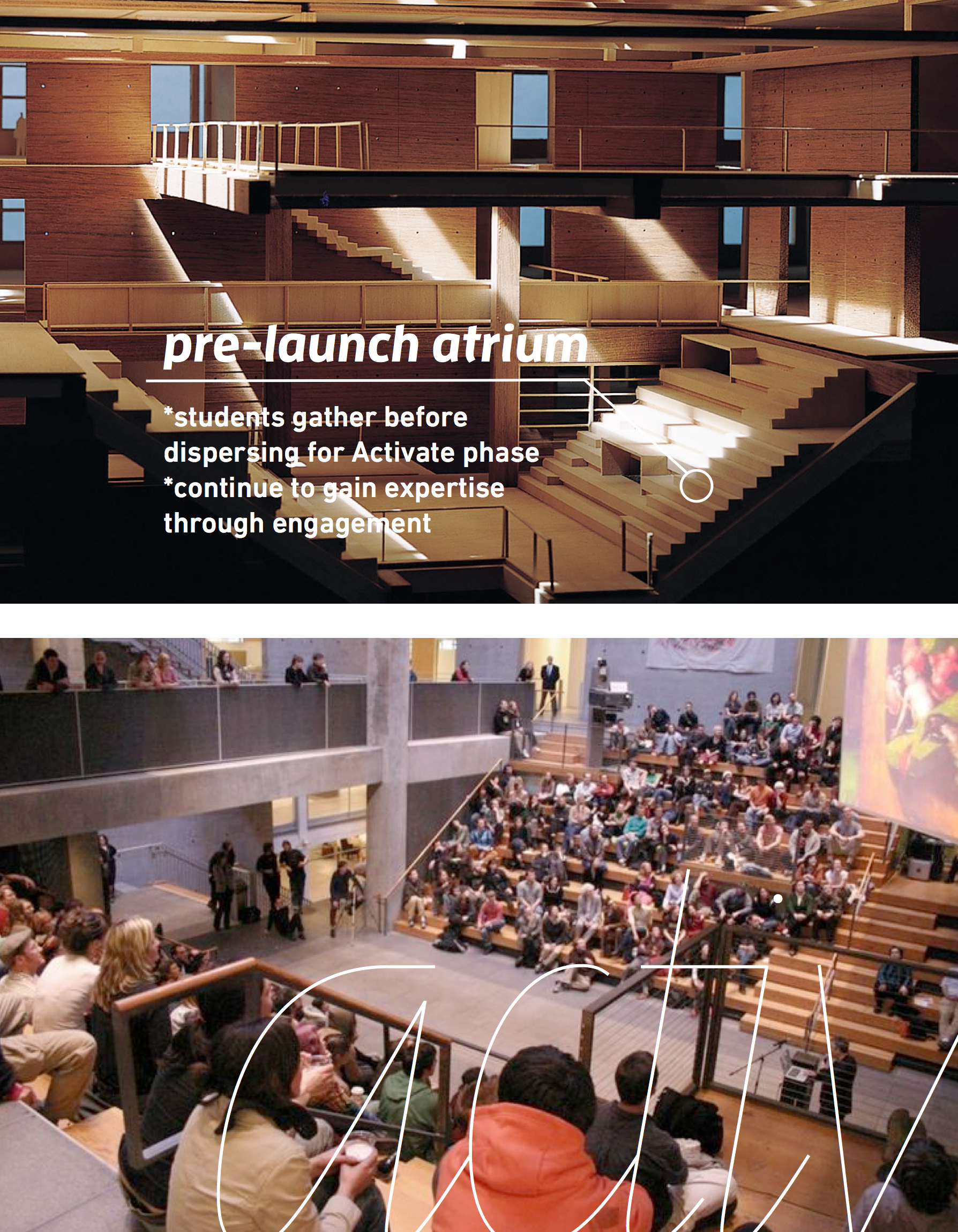
Learn More About...

Box ID: AF 34.13.64
Axis Flip Articles
Box ID: AF 34.13.64
Axis Flip Articles
Watch an Overview Axis Flip
ARTICLE 76
Anatomy of a Skill-Print
Skill-Print recovered from HR training manual
As a unique, living artifact of competencies, the skill-print became an invaluable tool for employers to assess the potential of a candidate. This particular one was recovered from a manual published just around the era when skill-prints were replacing transcripts and resumes.
This analysis tool guided HR trainees in how to evaluate the key features of a skill-print and look for the underlying abilities that have shown better predictive power for performance than other tools, especially in emerging / quickly evolving industries. This "anatomy lesson" was a part of basic training for Human Resource professionals by the middle of the century.
Watch Video of Sarah Stein Greenberg explain Skill-Prints
View Actual Skill Print from Exhibit
ARTICLE 91
New Center for Communication Effectiveness
Scale model of multidisciplinary hub circa 2024
Early in the 2020s, Stanford began making plans to build multidisciplinary competency hubs around campus. Each hub had a dean at the center and focused on the development and teaching of new undergraduate courses, fed by research and aided by instructional designers.
When faculty were in residency at hubs like this one, collaborations across departments spiked and groundbreaking research accelerated.
The hubs were architected to embody the spirit of openness and collaboration. Hubs were known for faculty-student mixing and the teaching of courses in state-of-the-art studio classrooms.
Watch Video of Carissa Carter explain Competency Hubs
View Competency Hub Exhibit Layout
Learn More About...

Box ID: PL 249.185.26
Purpose Learning Articles
Box ID: PL 249.185.26
Purpose Learning Articles
Watch an Overview of Purpose Learning
ARTICLE 34
Watch Video of Sarah Stein Greenberg explain "Getting The Call"
Getting “the Call”
Recordings of Stanford Reserve Corps messages
The phone displayed here plays several actual recordings given to students upon receiving the news of their rotation in the Stanford Reserve Corps. The Reserve Corps was created in 2024 to create an experiential and immersive learning experience that challenged students to apply their declared mission in context.
As a secondary goal, the Stanford Reserve Corps existed to provide support to areas of need in collaboration with partner organizations around the world. Stanford was grateful for the longstanding relationships it forged with project partners, and for inculcating a spirit of service, humility and braveness amongst its populi.
As you will hear in the messages, Stanford students relocated to Collectives for one month before traveling to prepare for the journey ahead of them along with their team of peers.
Listen to Stanford Reserve Corps Calls
ARTICLE 62
At the Farm and Around the World
Evolution of the Stanford campus map and flyover of Impact Lab sites
Stanford’s footprint at home and abroad has shifted continuously throughout history.
Part one of this projection shows the evolution of the campus map from 1902 through select intervals until the advent of undergraduate teaching hubs in 2024. A hallmark of the Axis Flip era, these hubs had a Dean at the center of each. Faculty were co-located at hubs for periods of time to develop and teach new courses.
Part two is a flyover of a handful of global Impact Labs. Students often spent up to a year in an Impact Lab as a way to apply their field of study to challenges they cared about. Sometimes thought of as an academic analogue to the Olympics, Impact Labs attracted the top faculty from Stanford and around the world for in-context research and application.
Watch Video of Carissa Carter explain Impact Labs
Watch History of Campus Maps and Impact Labs
ARTICLE 211
Declare a Mission, Not a Major
Recovered time capsule images
In response to the hunger for the meaning or ‘why’ behind one’s studies, Stanford piloted the “Declare a Mission, not a Major” program in 2017, in which students coupled their area of learning with the purpose that fuels it.
Launched formally in 2021, Purpose Learning prompted the launch of a series of “Impact Labs” around the world in which faculty and students tackled global challenges through immersion.
Iconic Impact Lab examples include the ten-year collaboration between Stanford, MIT and IIT which accomplished its ‘moonshot’ goal of making clean water accessible for every citizen in Southeast Asia.
Watch Video of Jess Munro explain Mission Statements.
Time Travelers declare their mission.
View Gallery of Declaring Missions.
